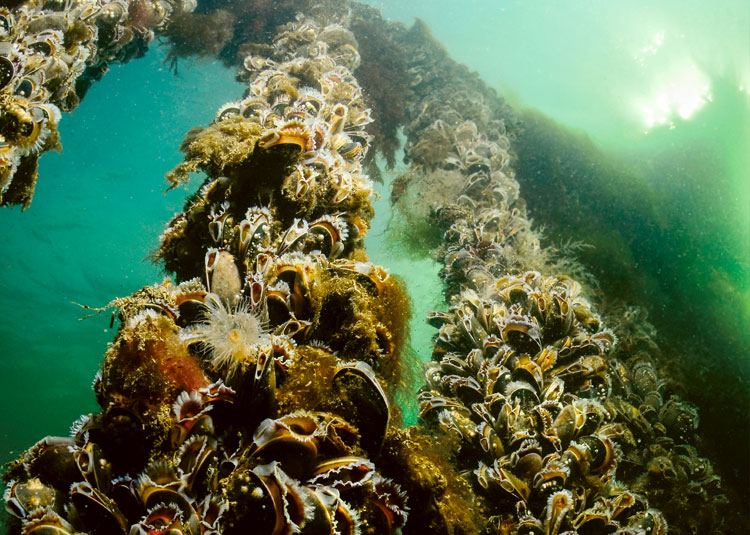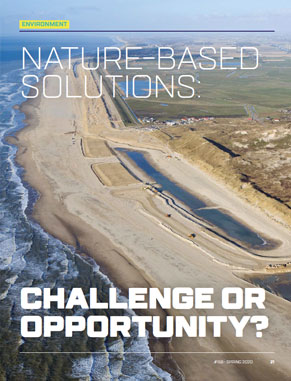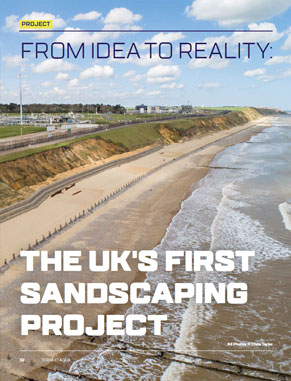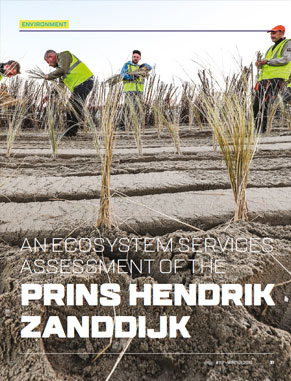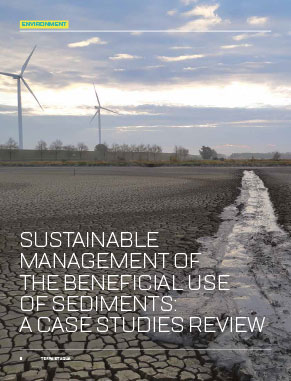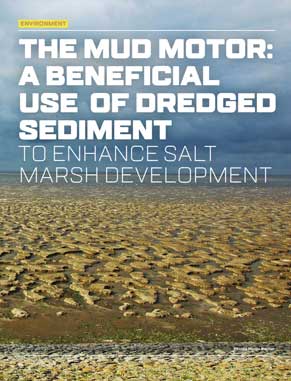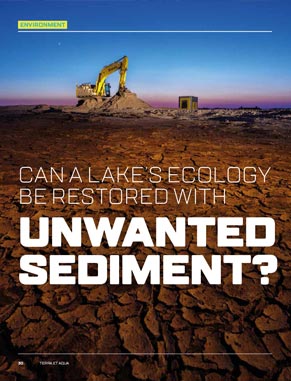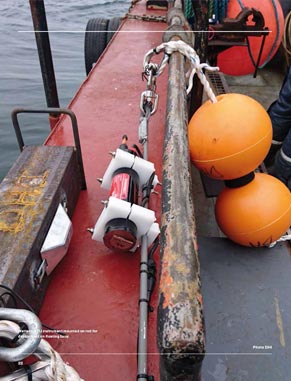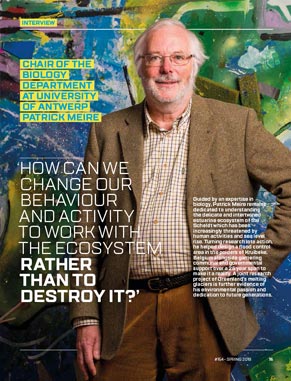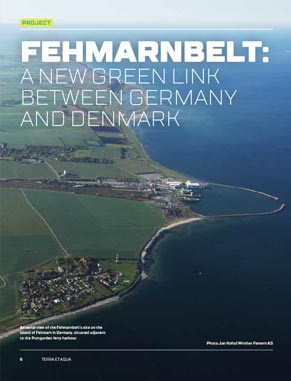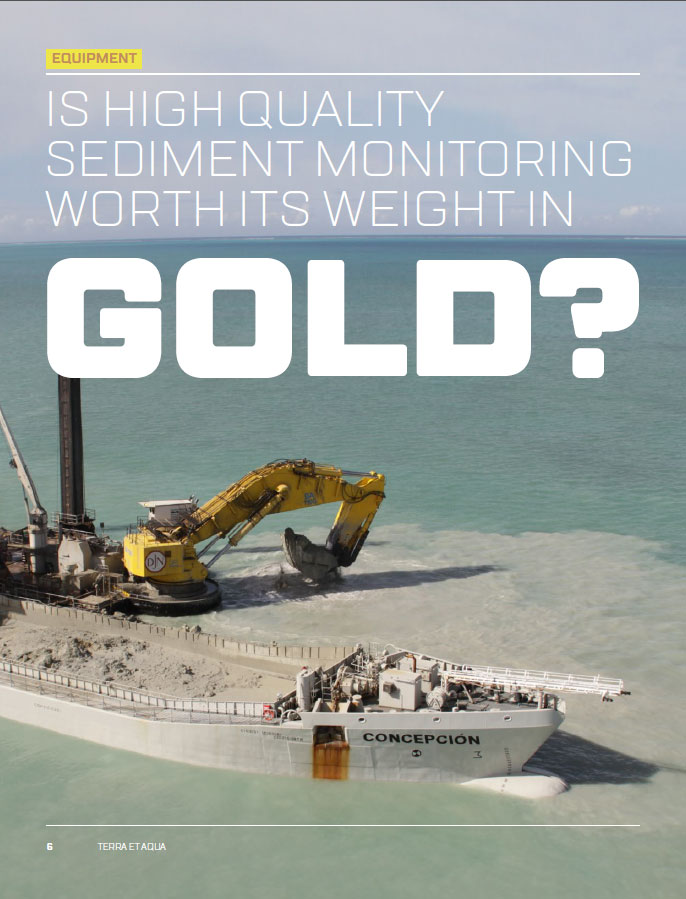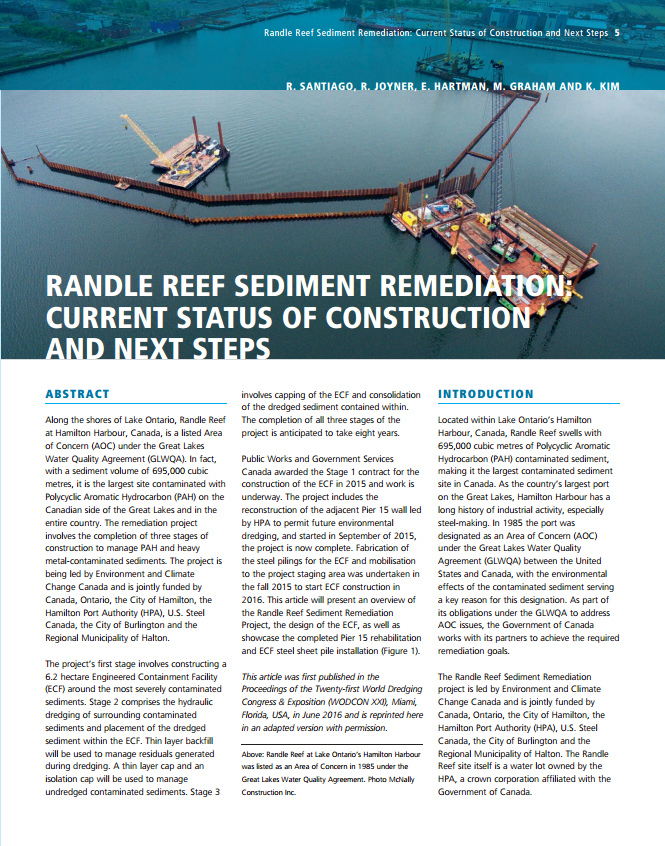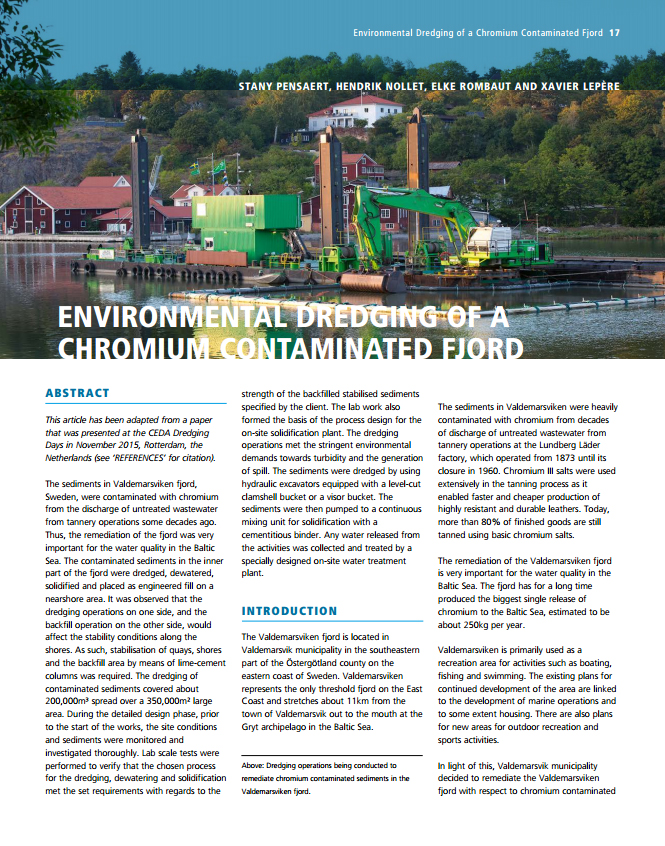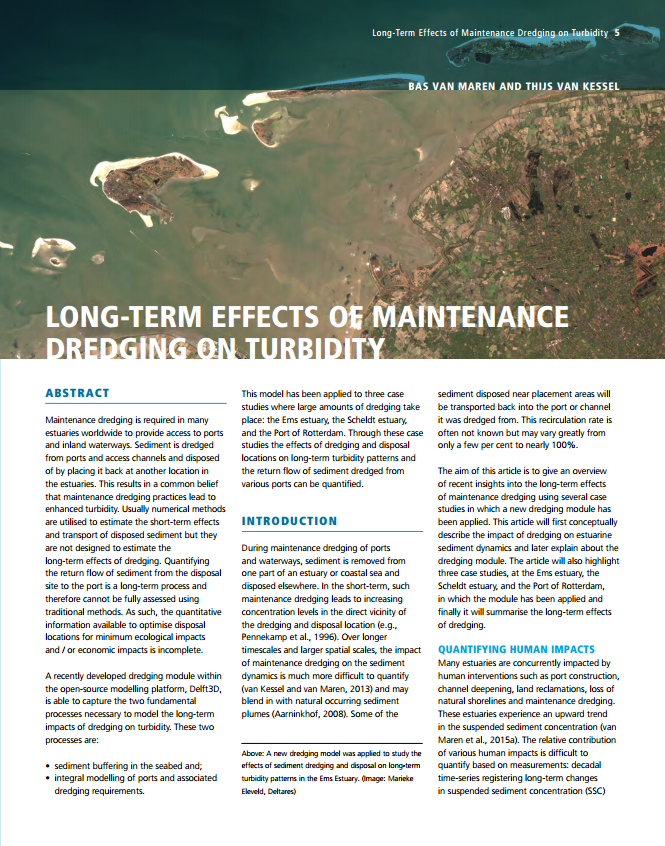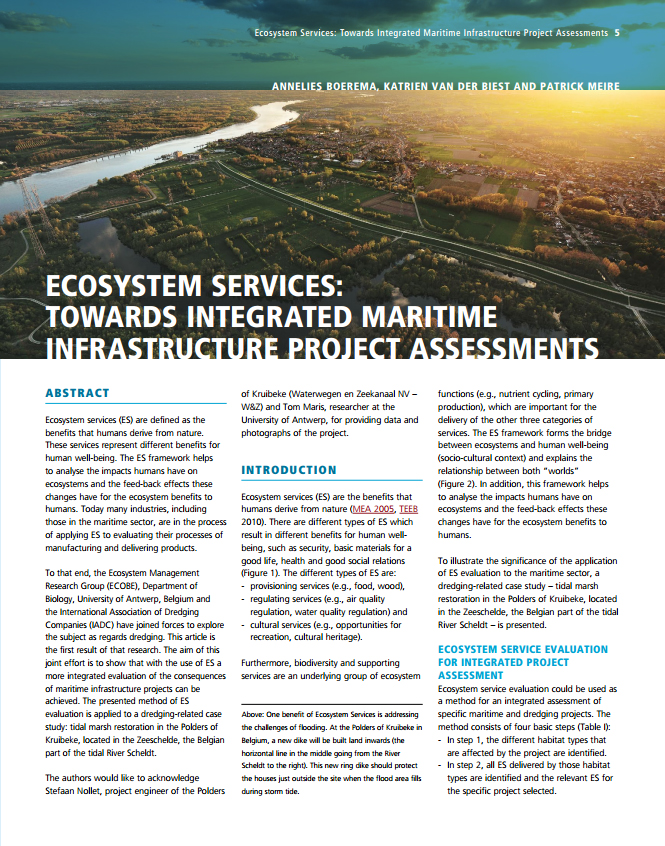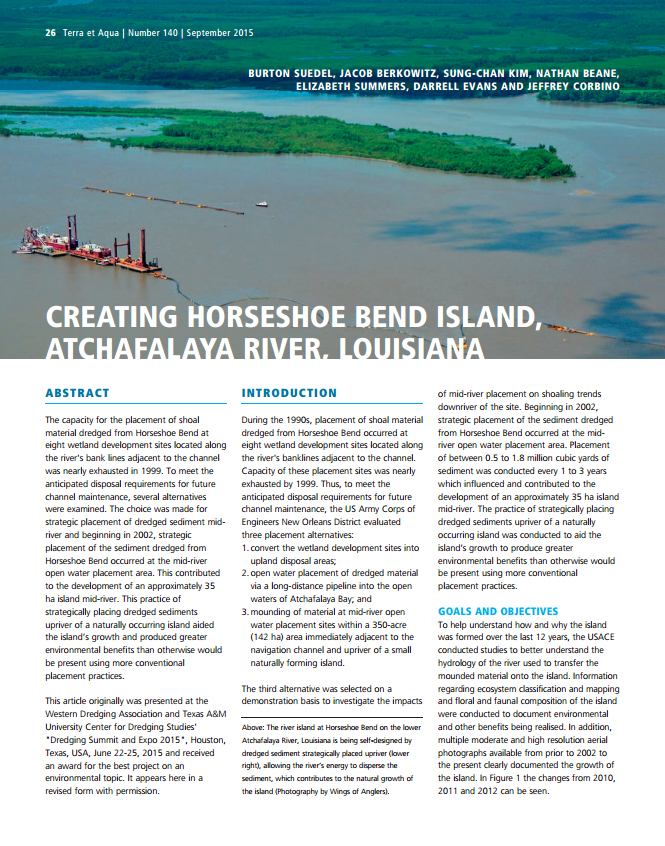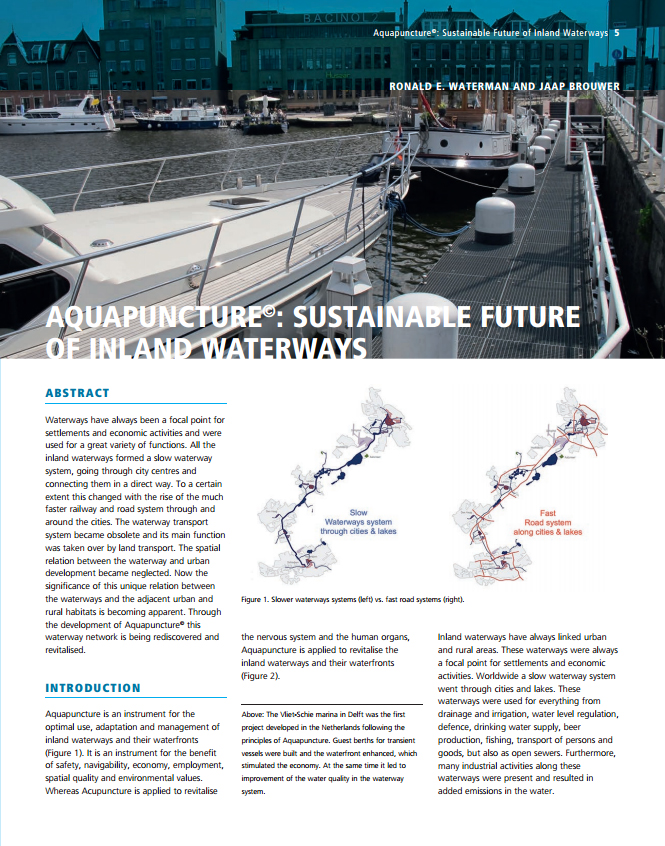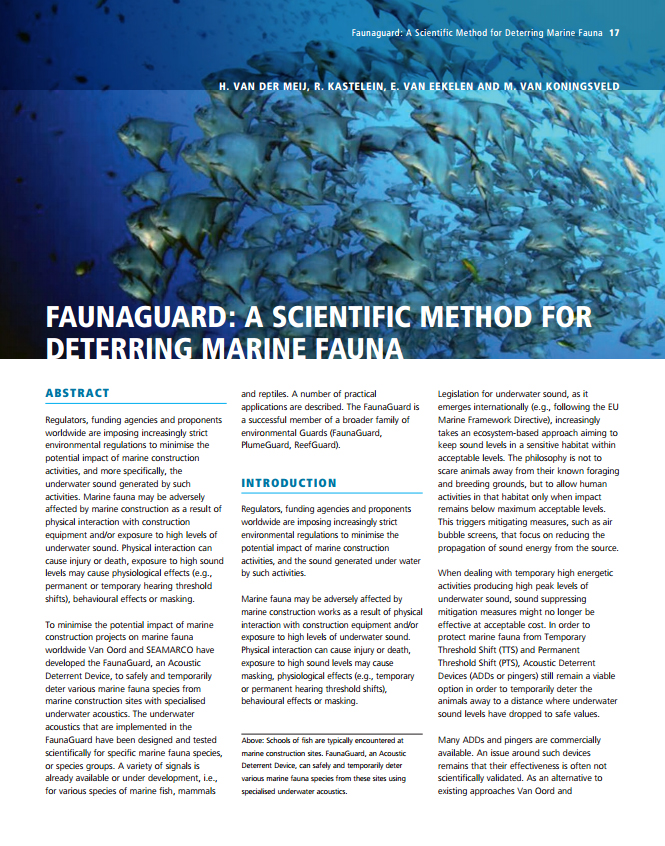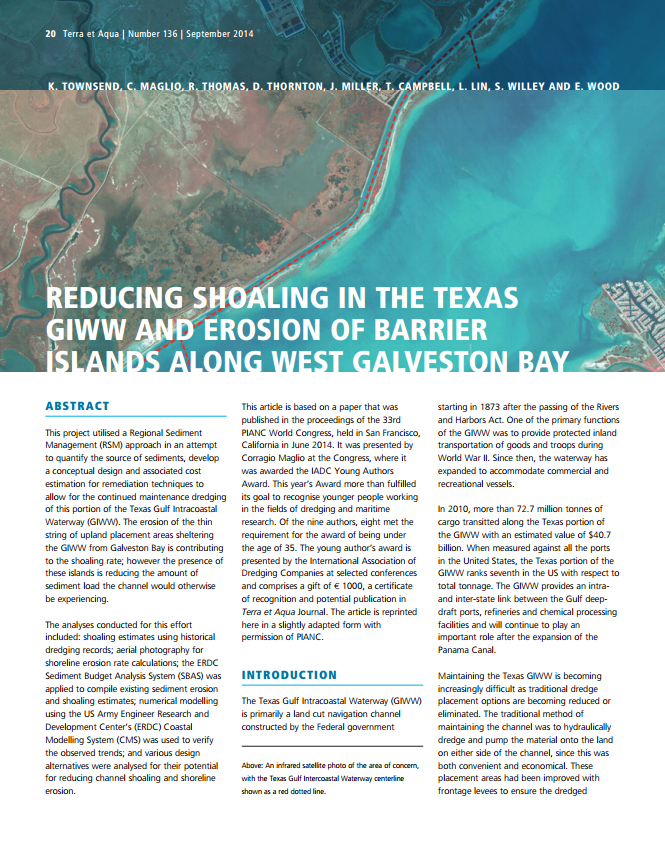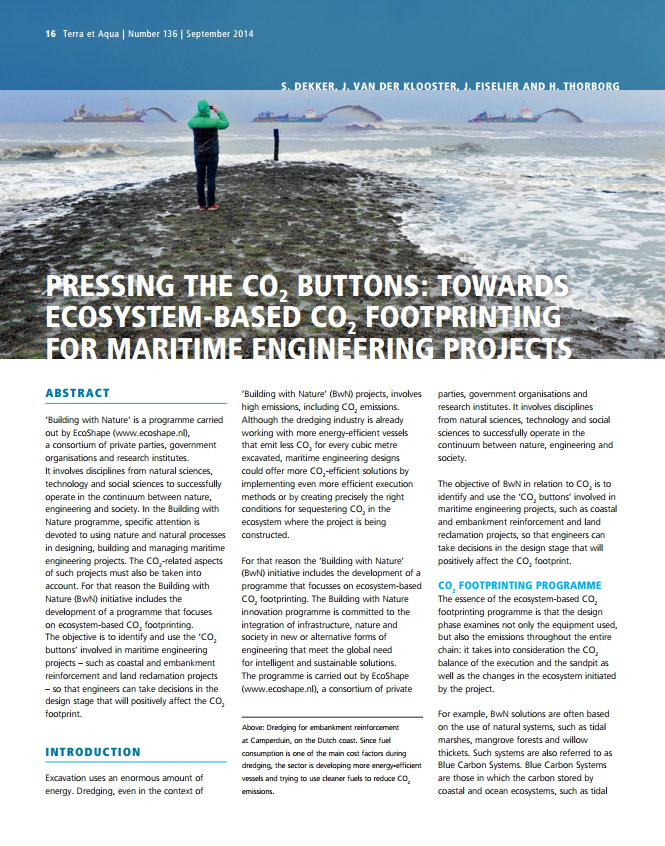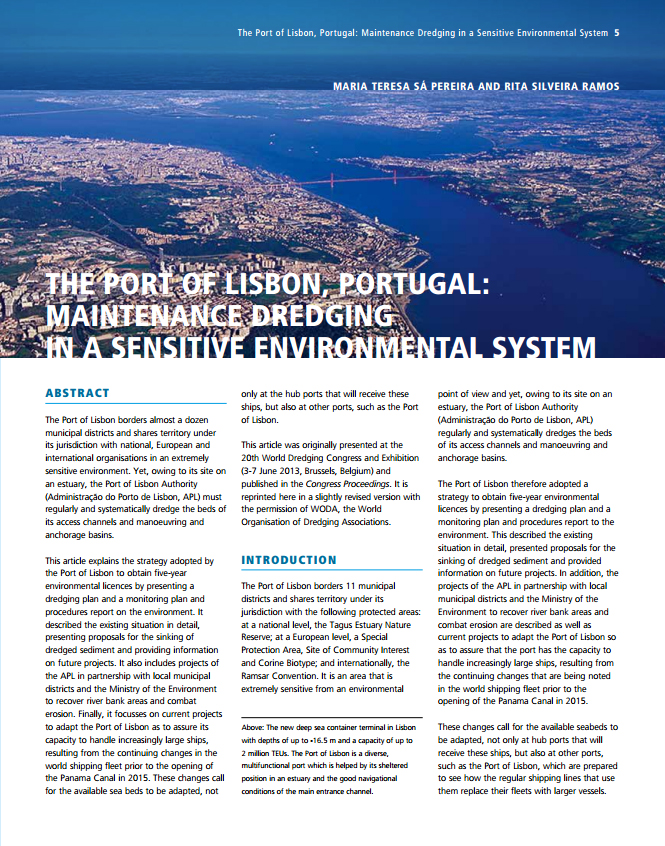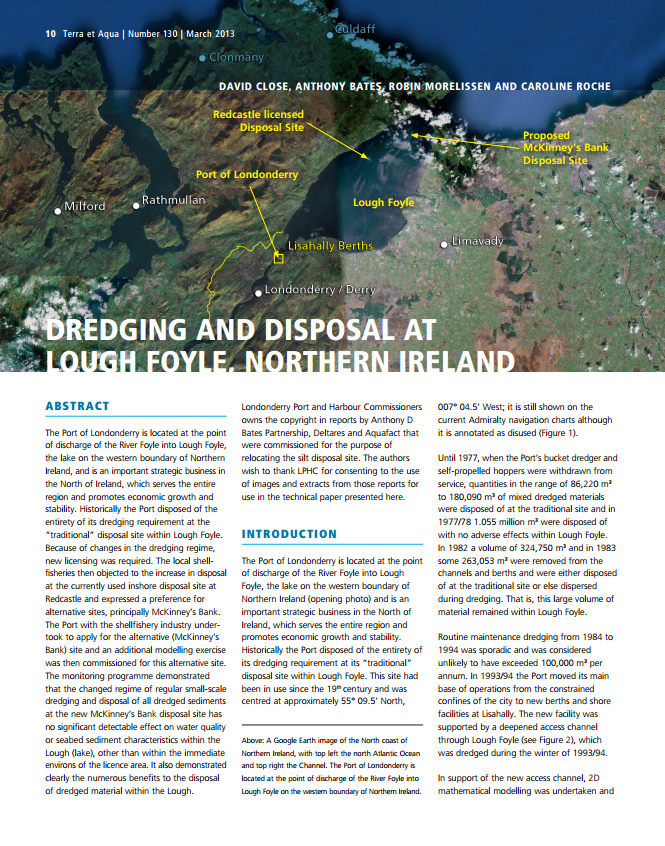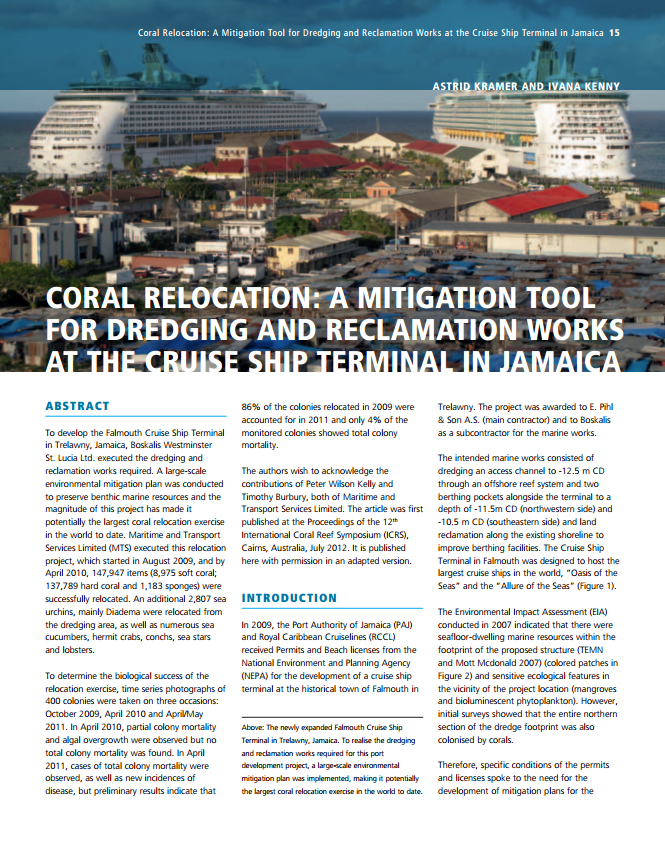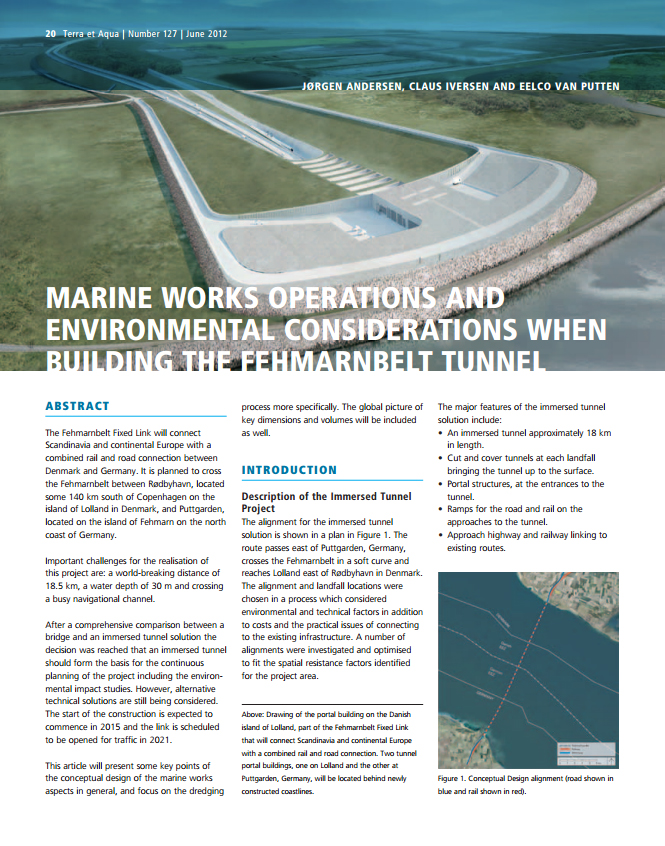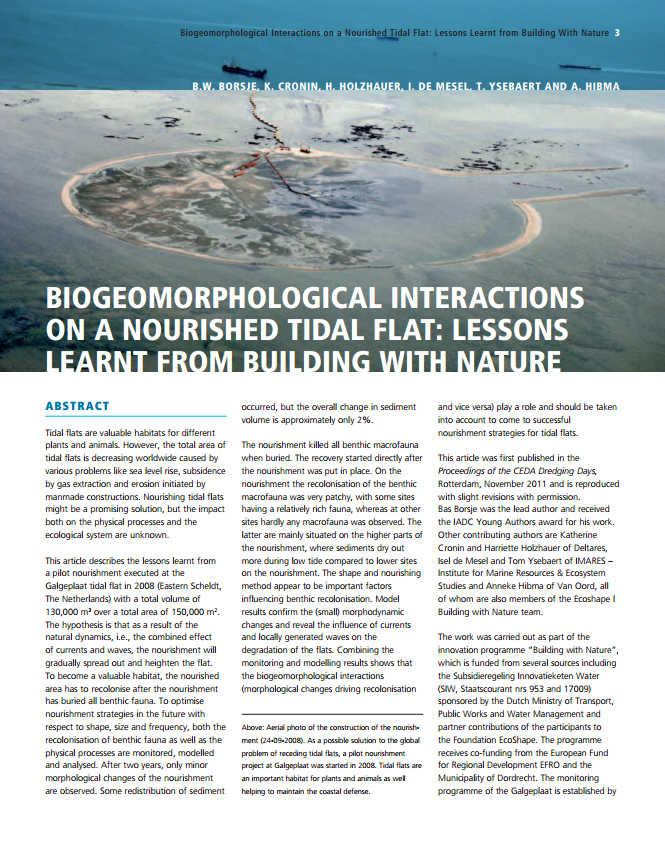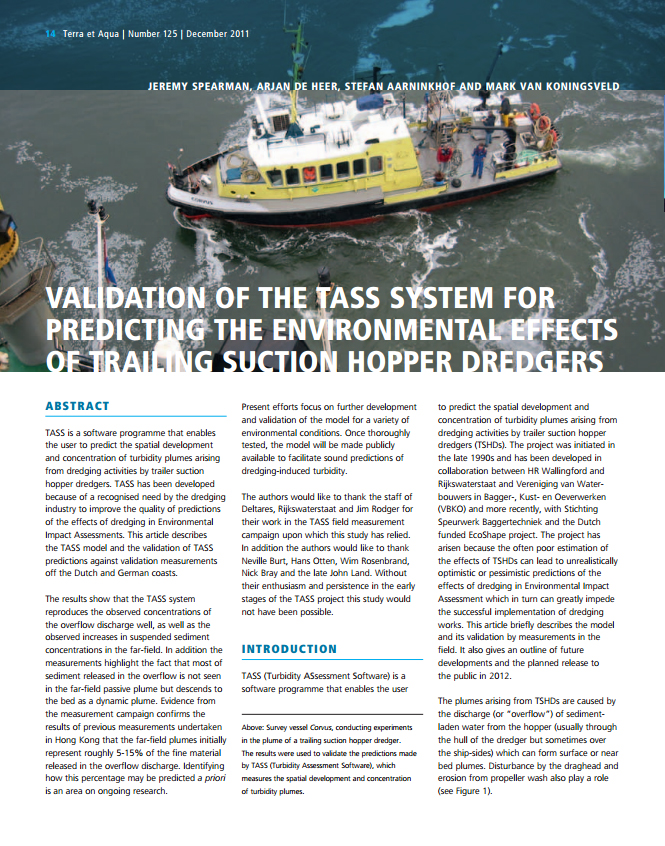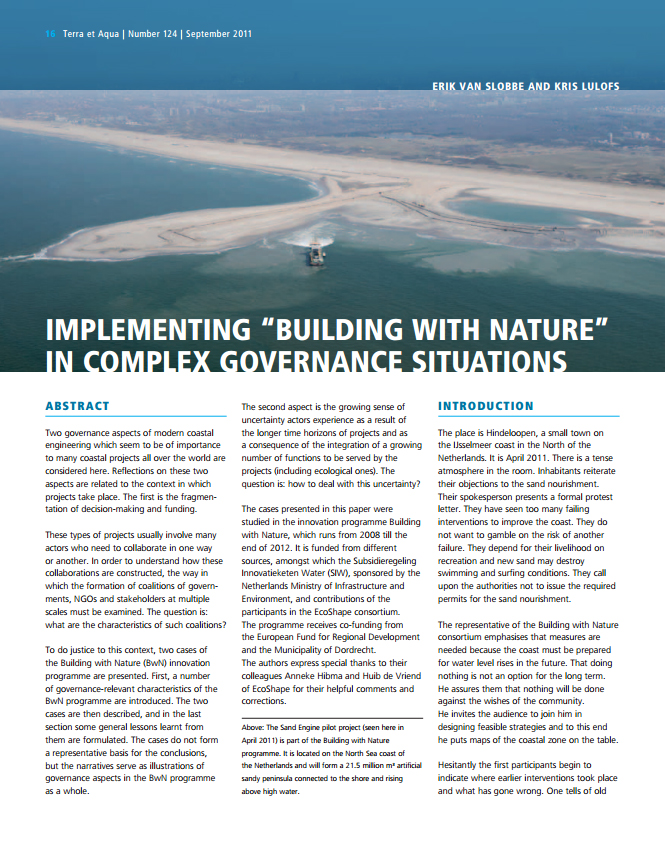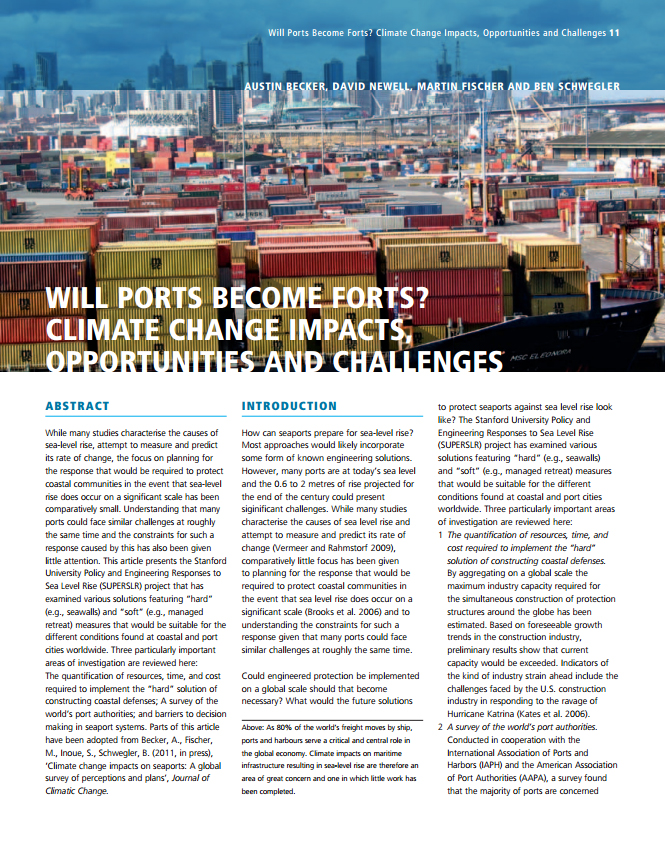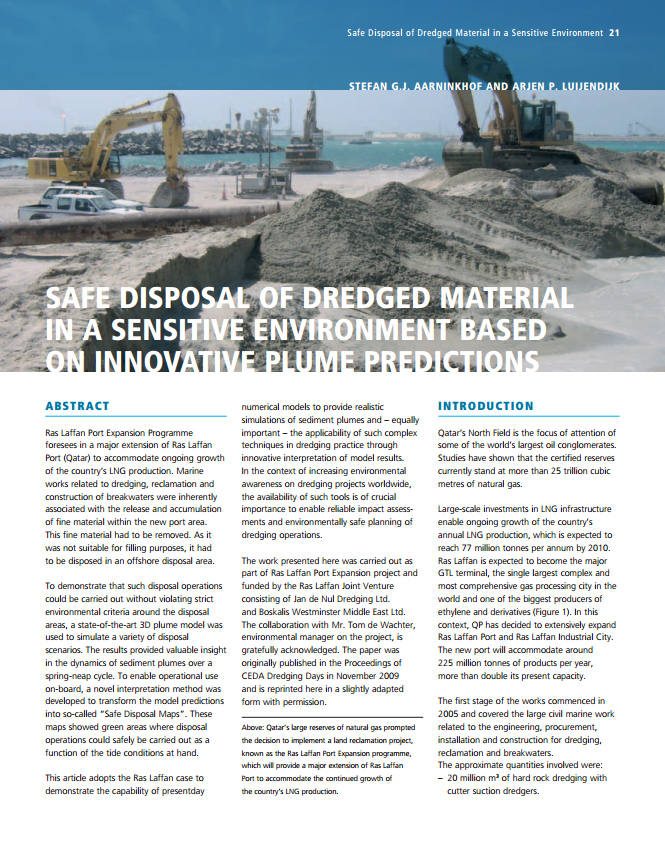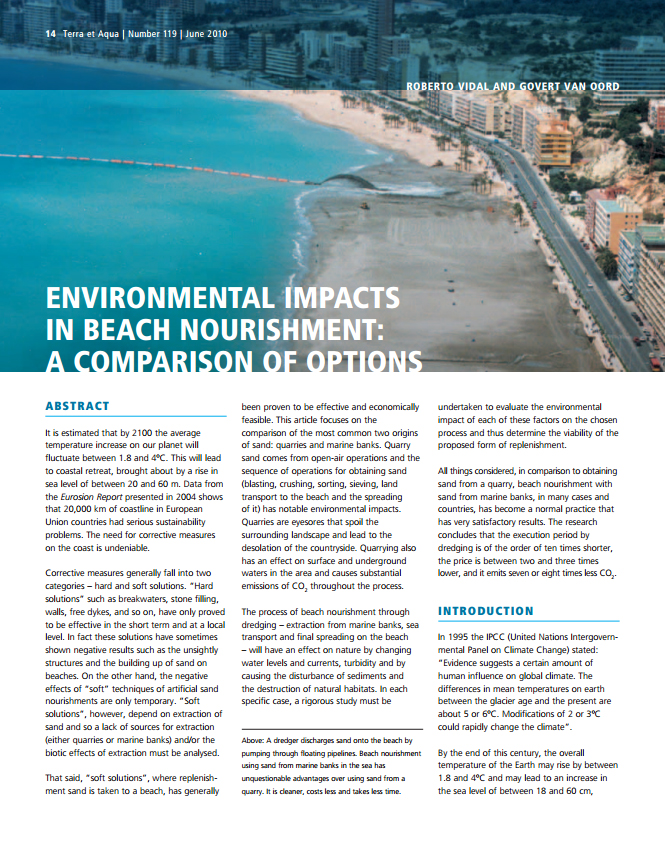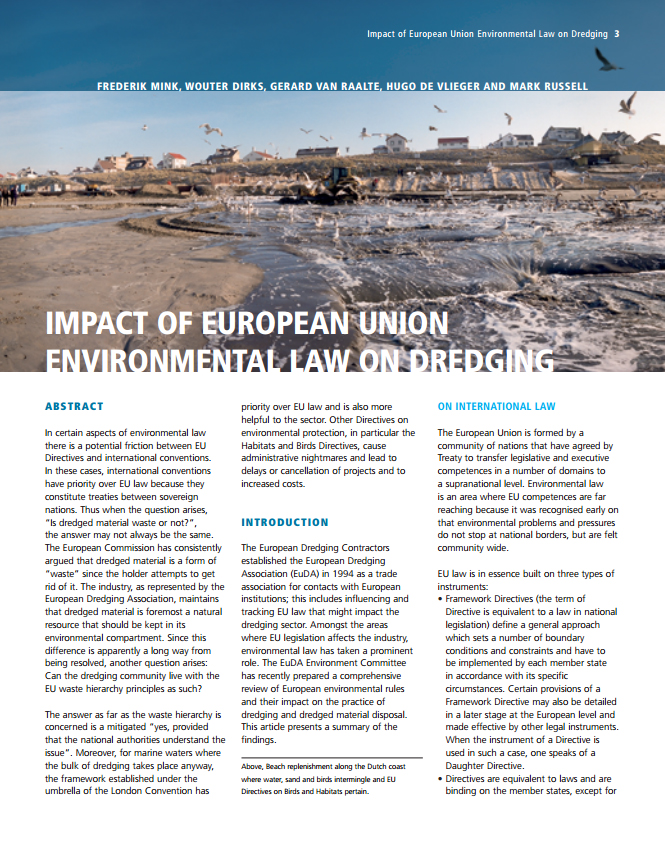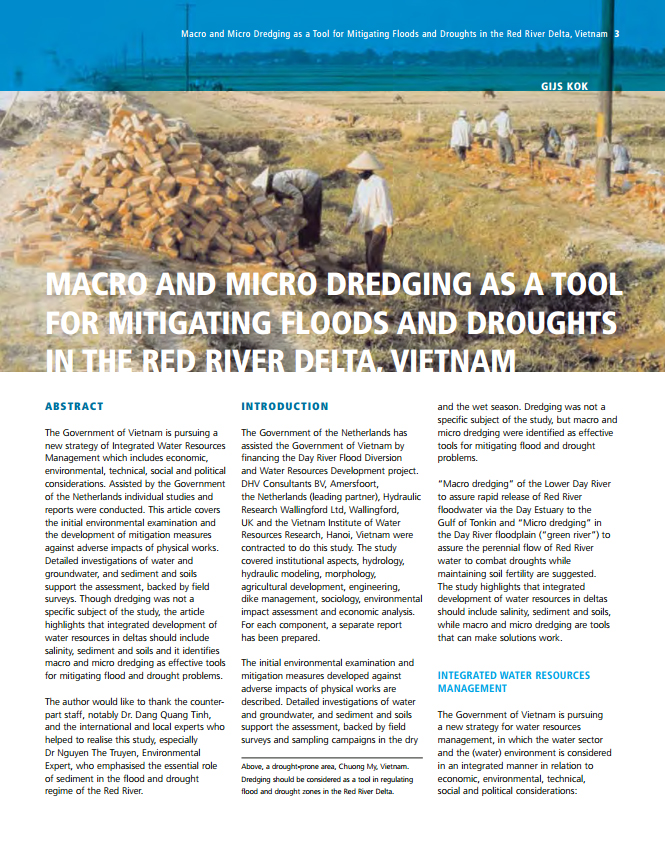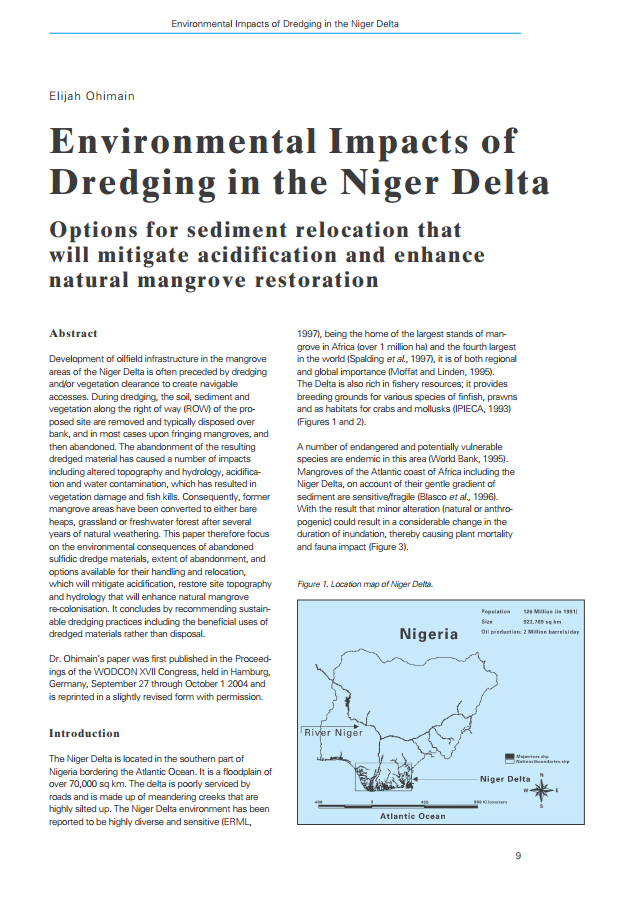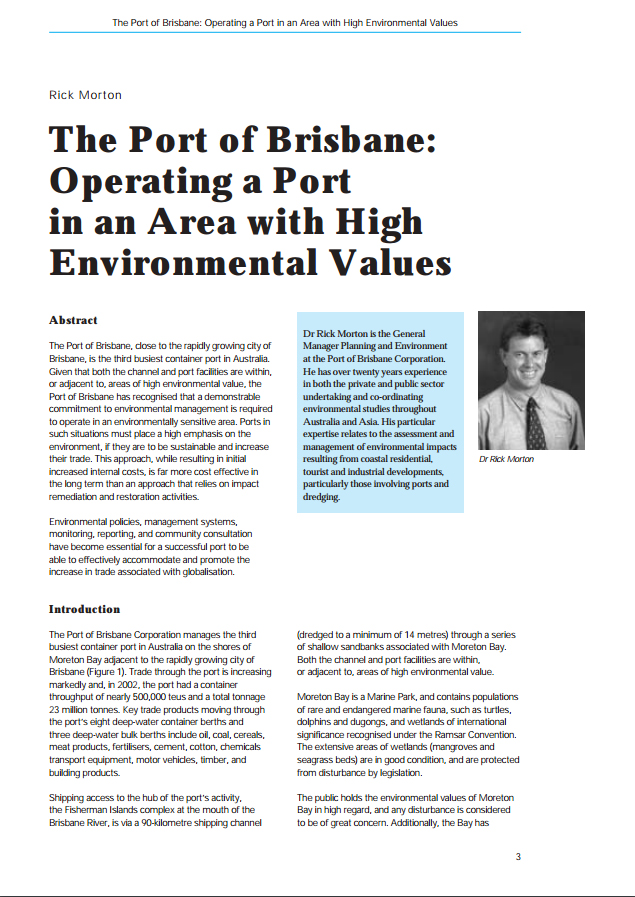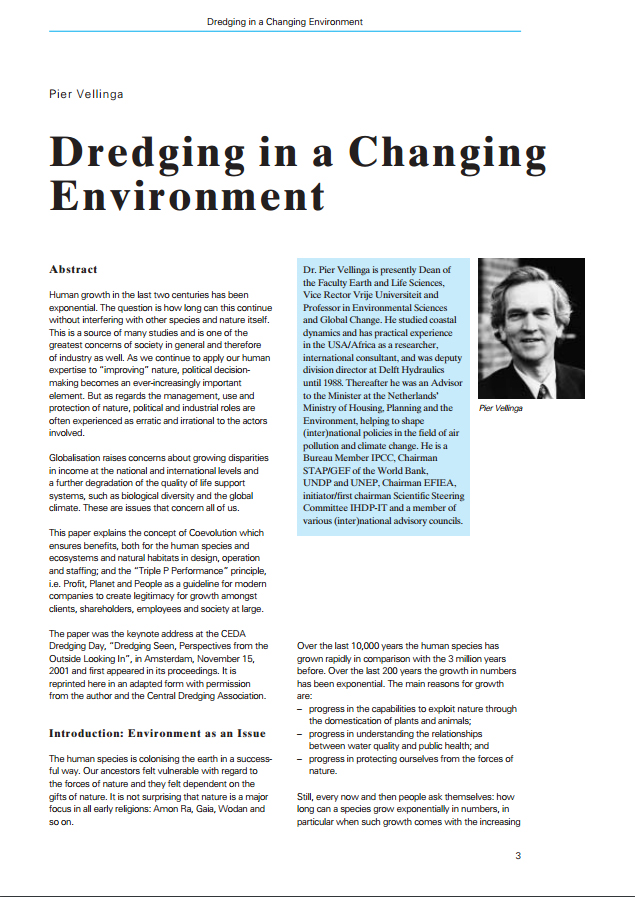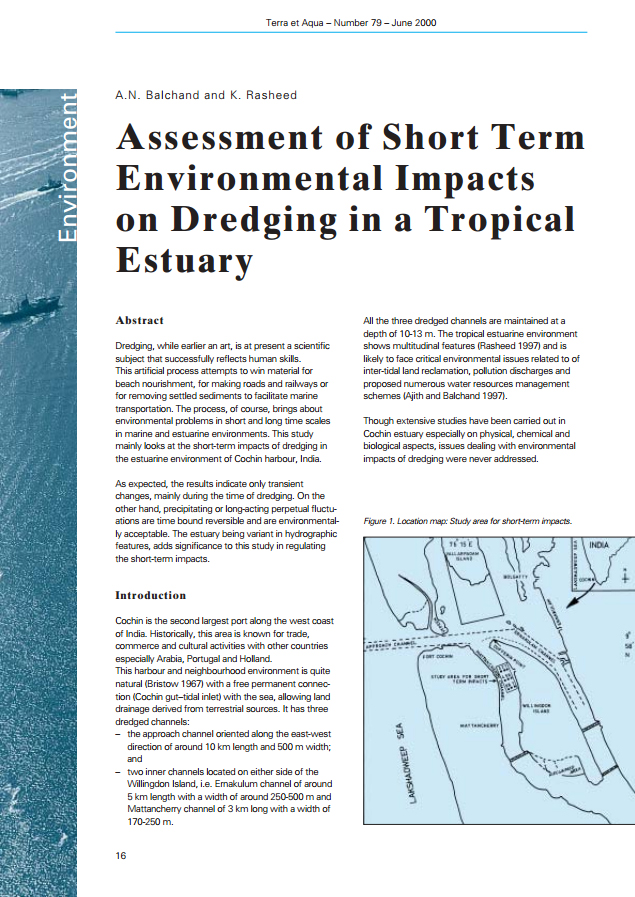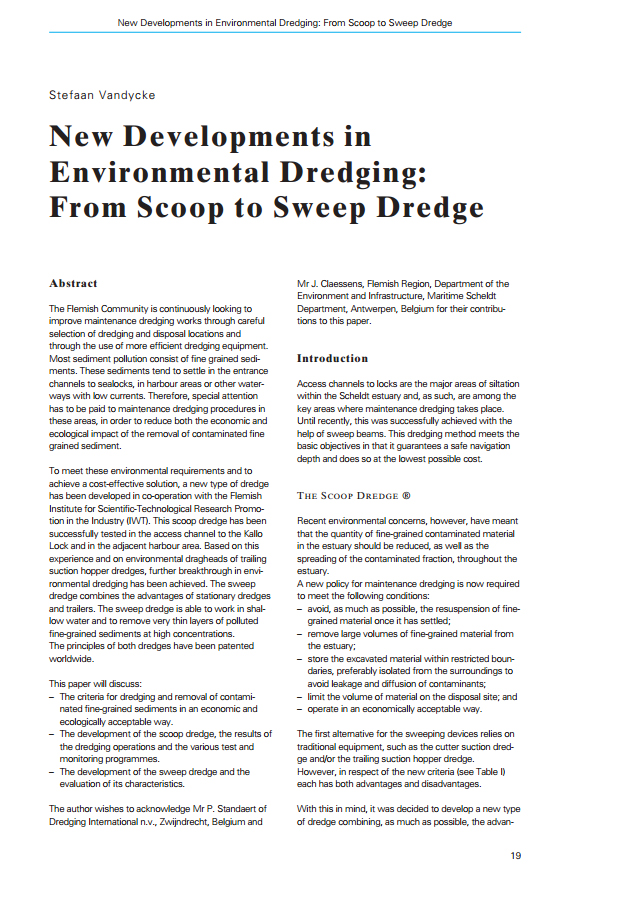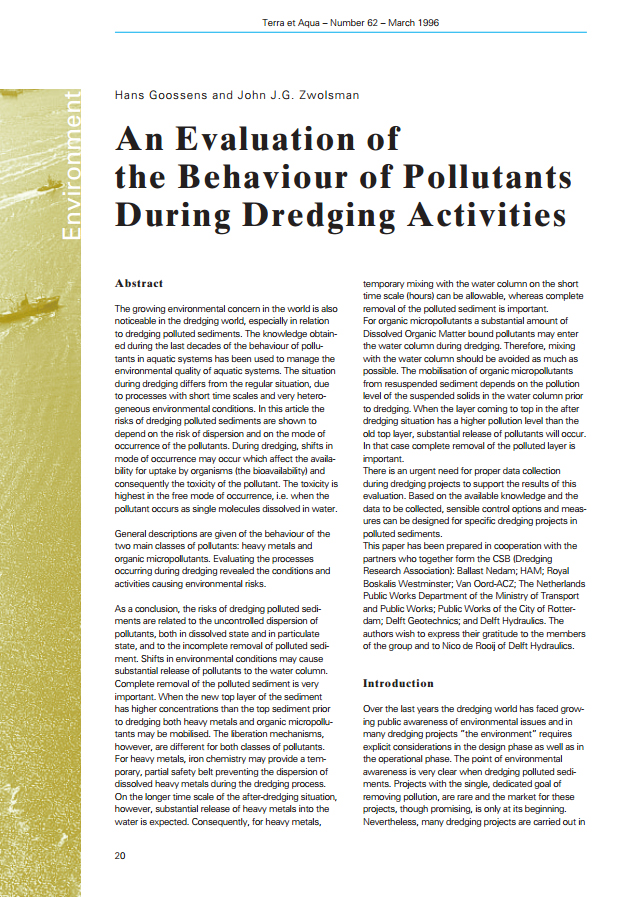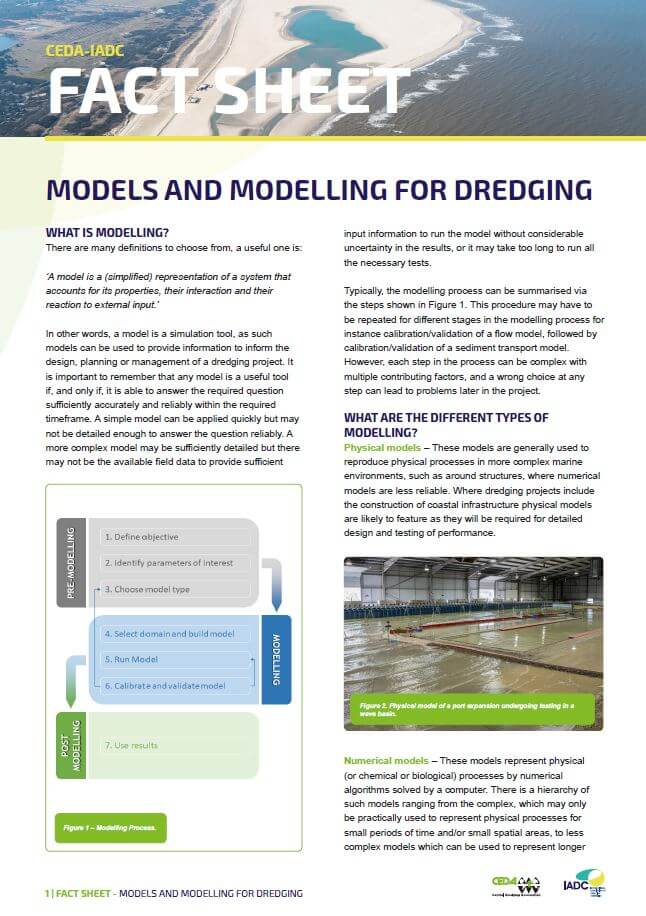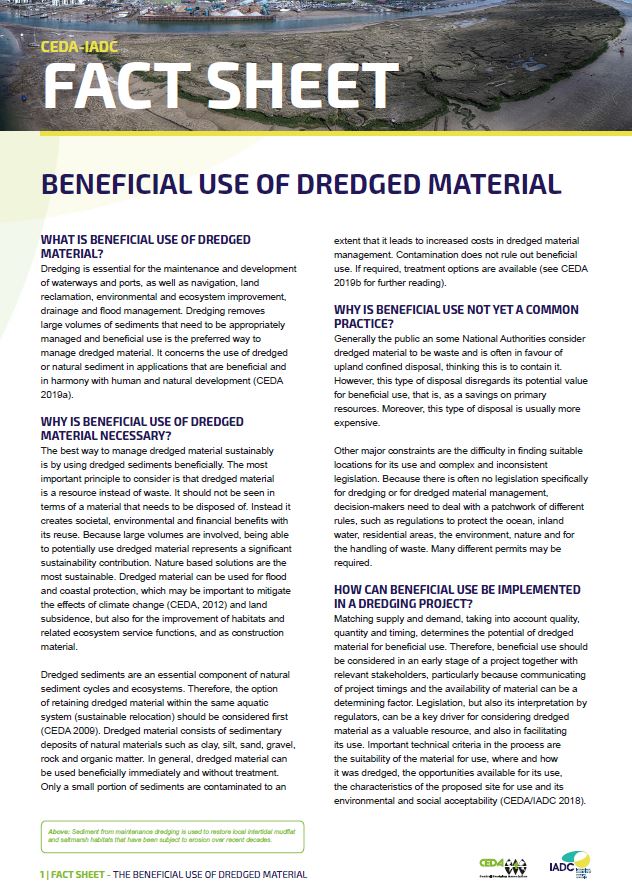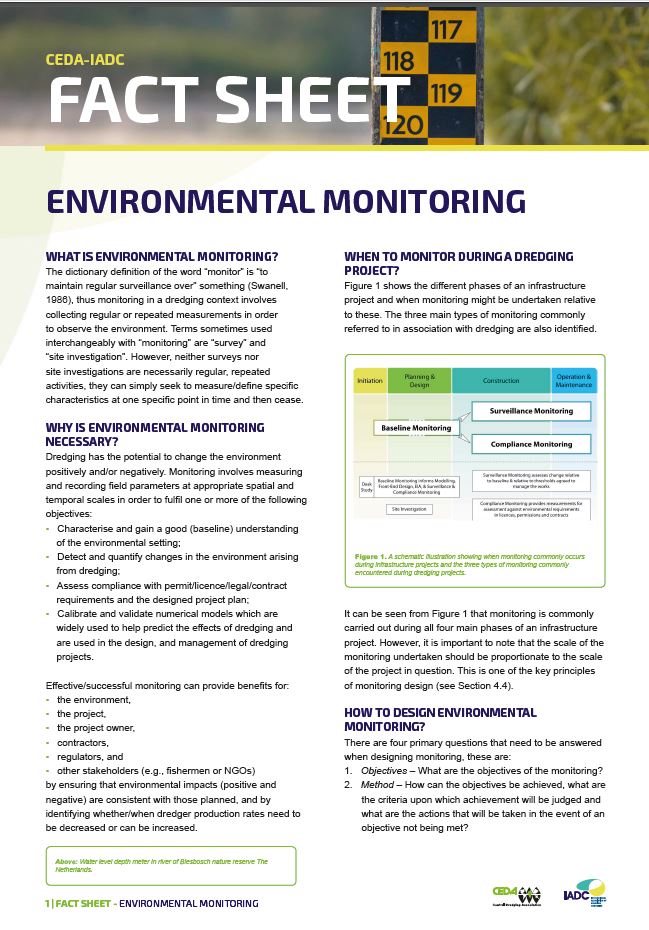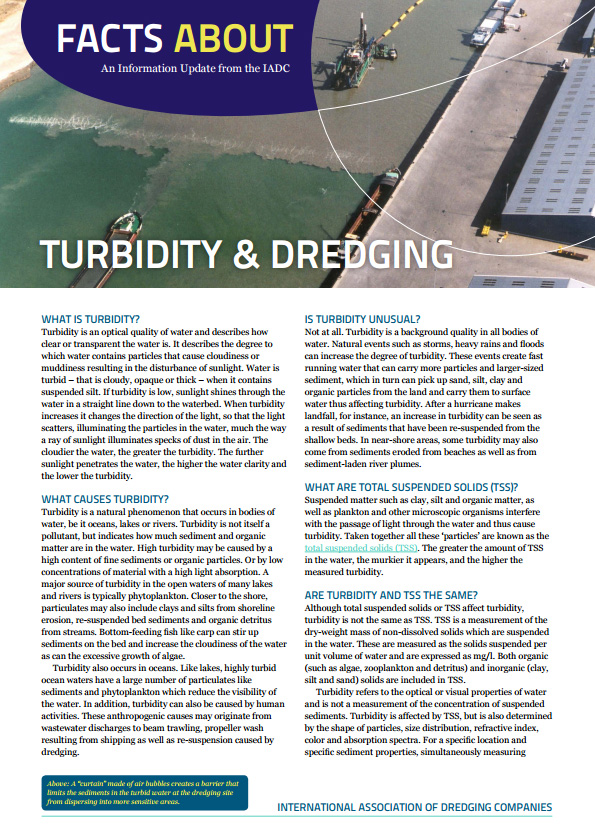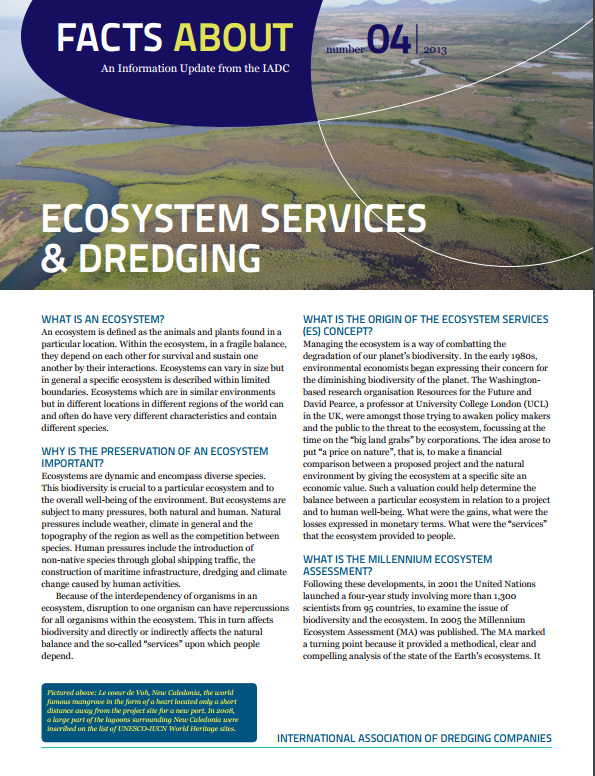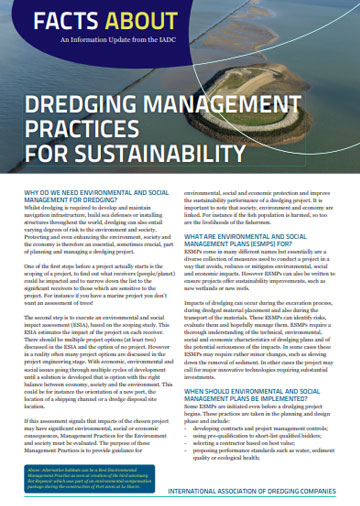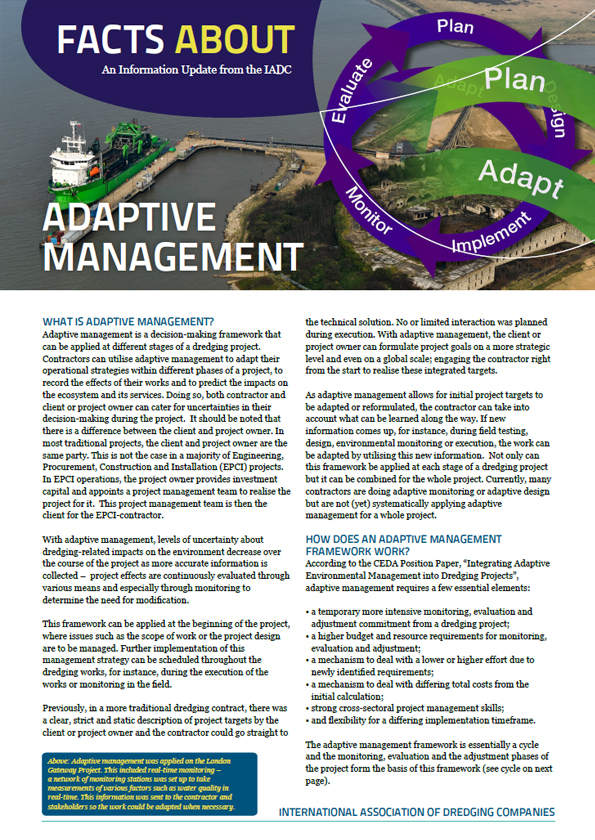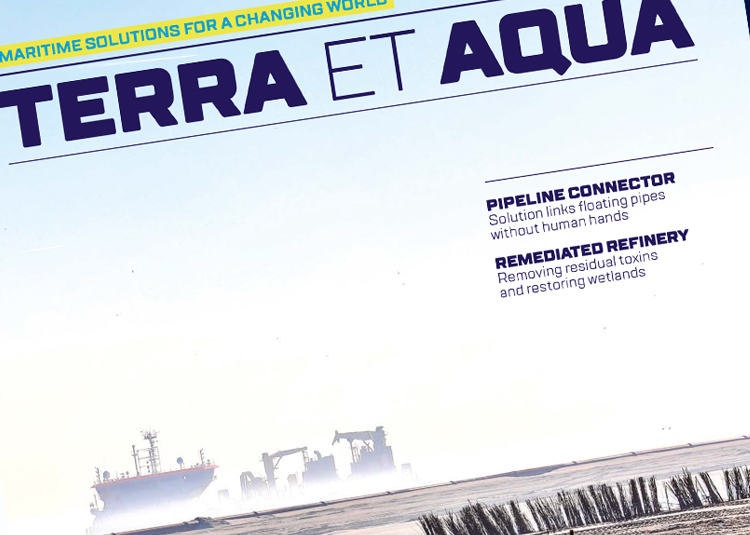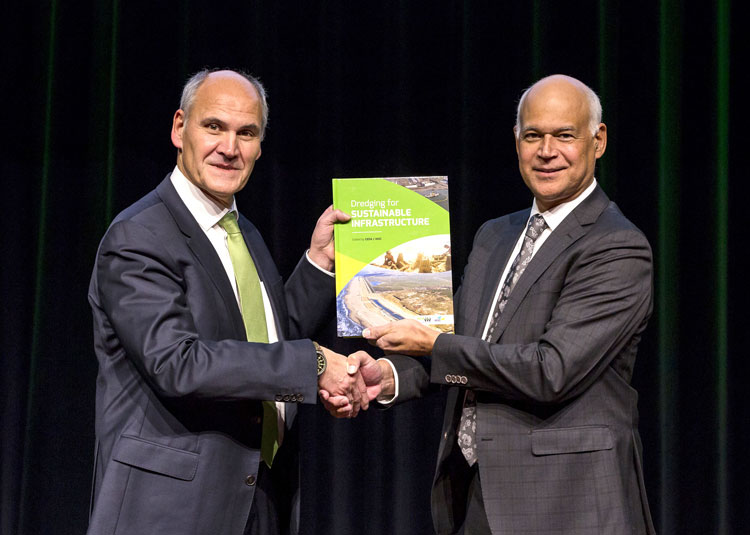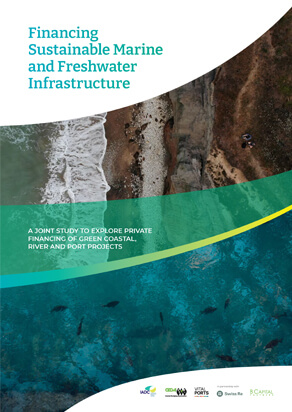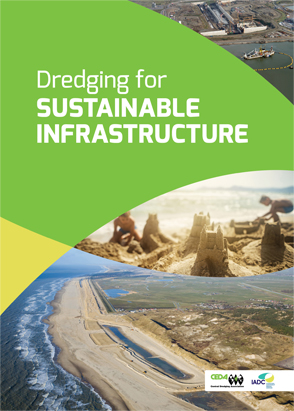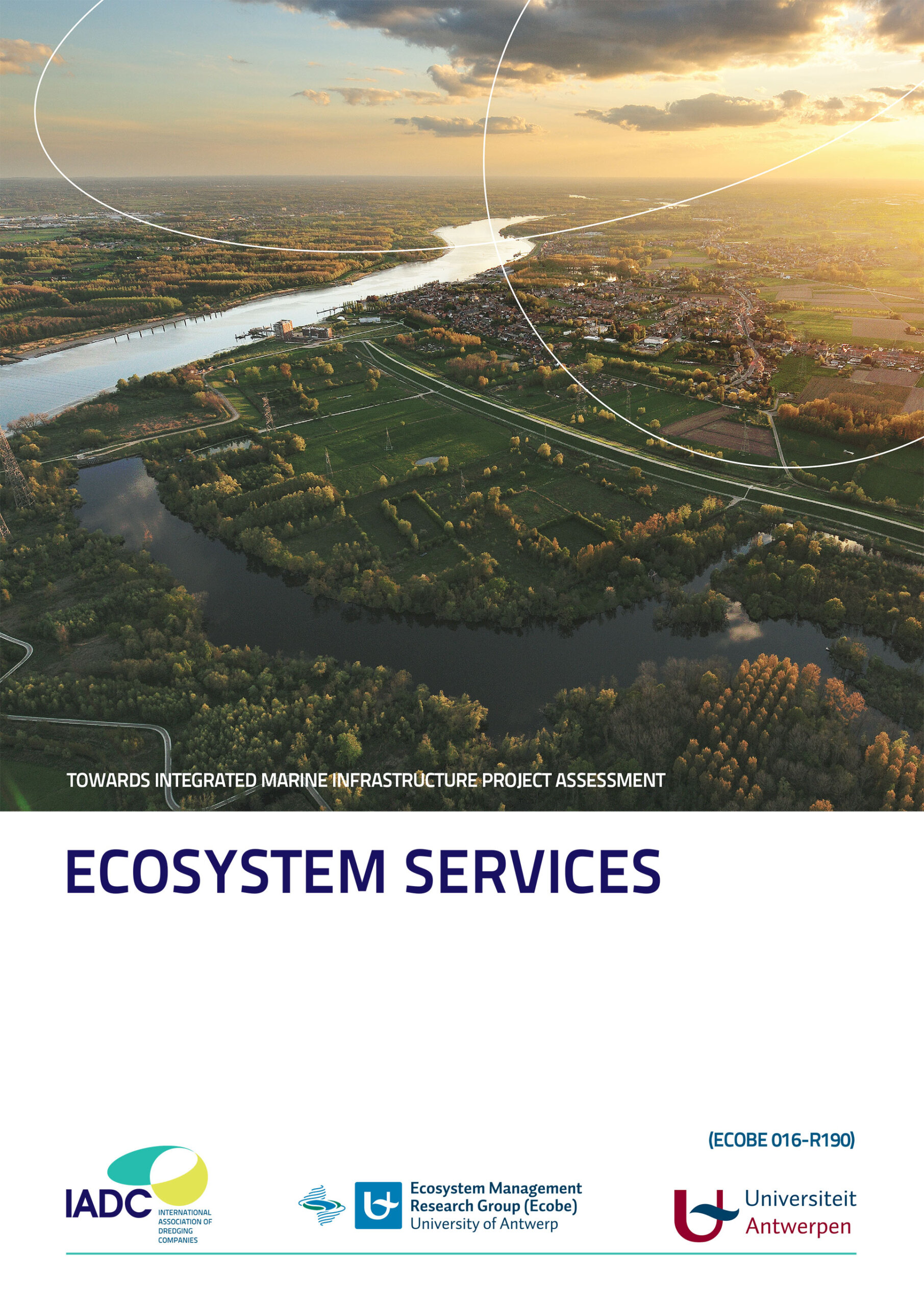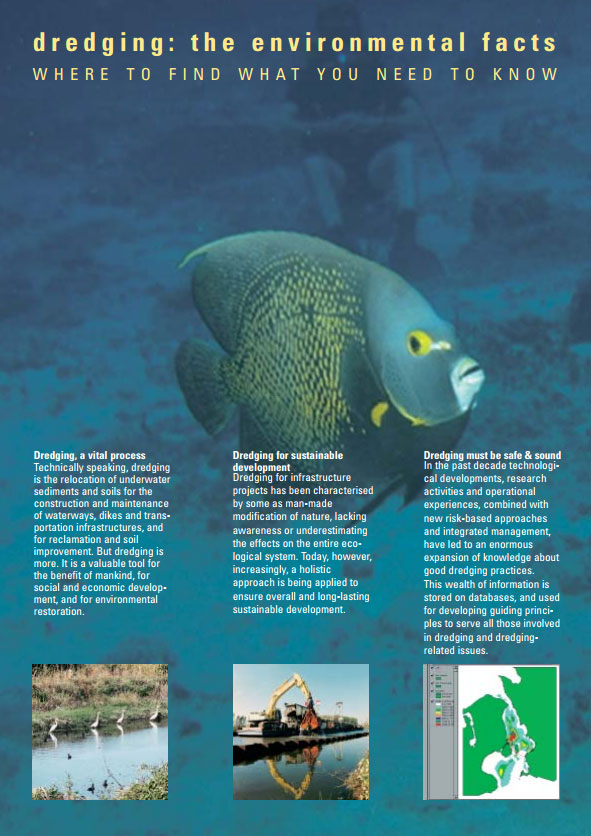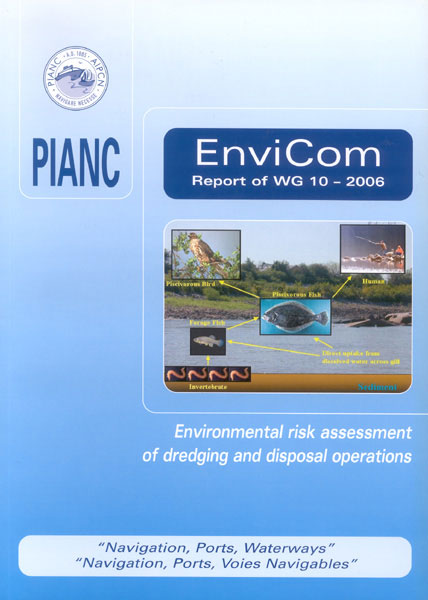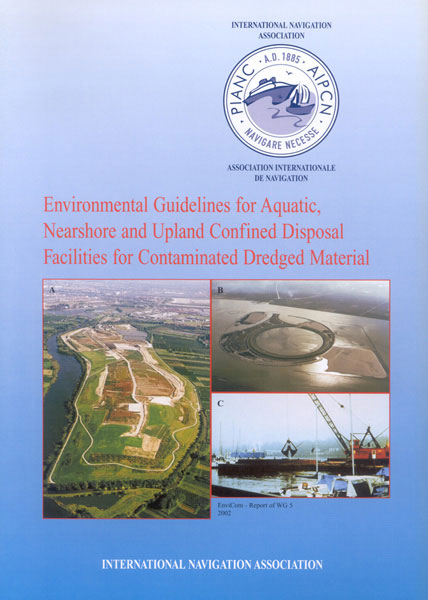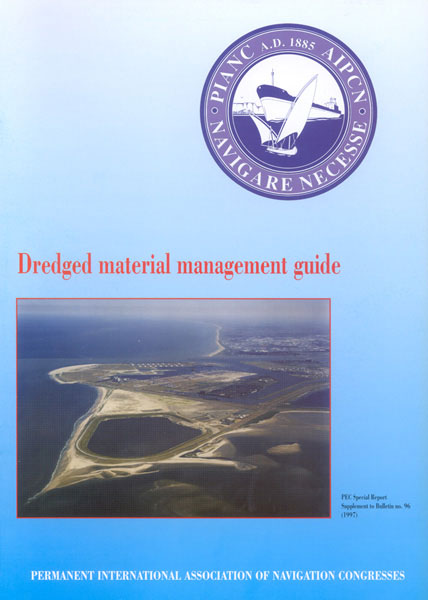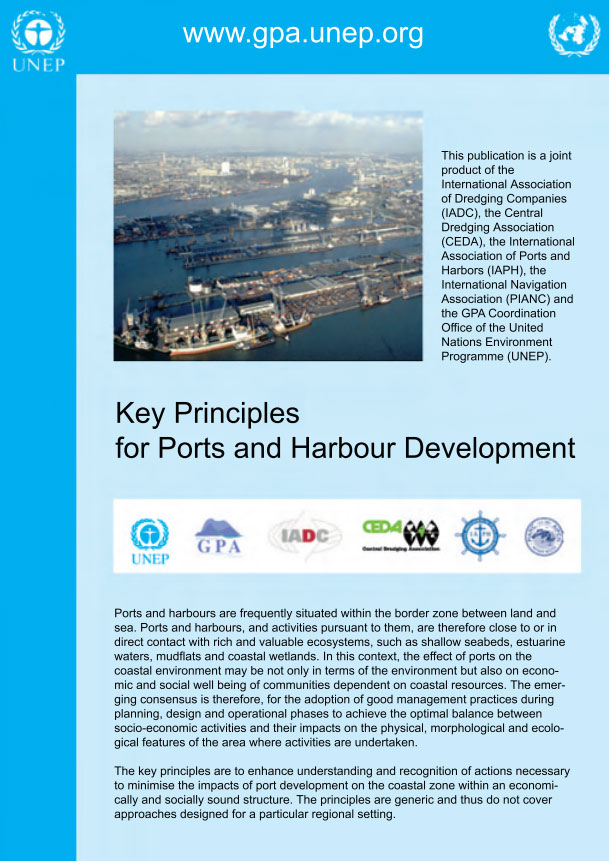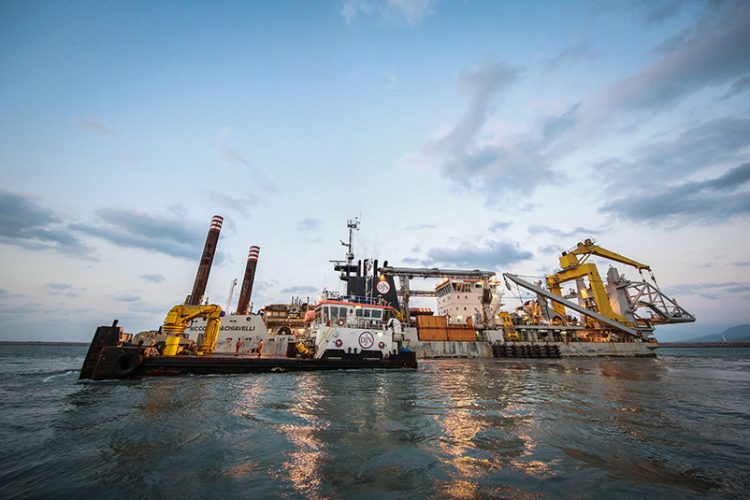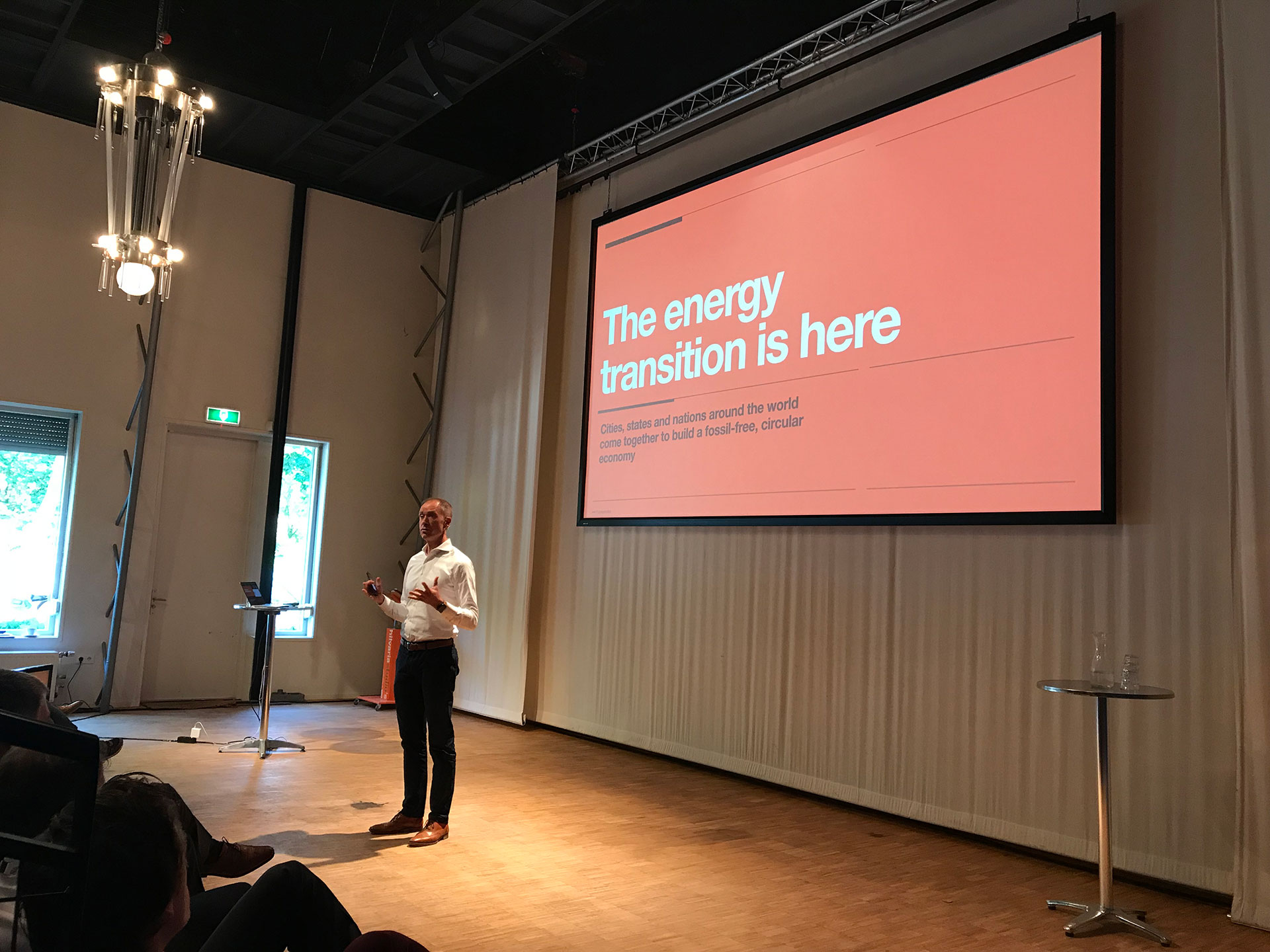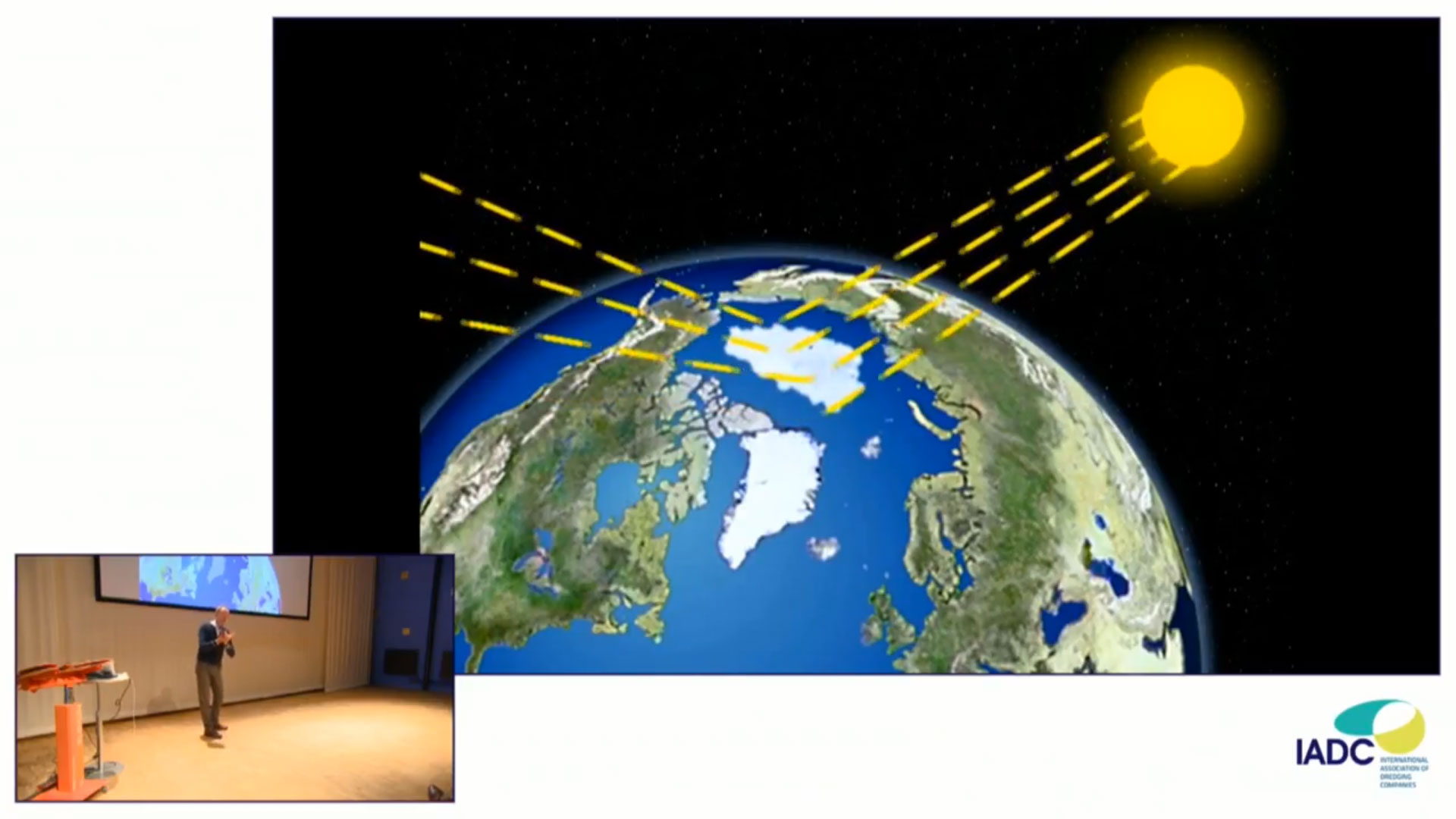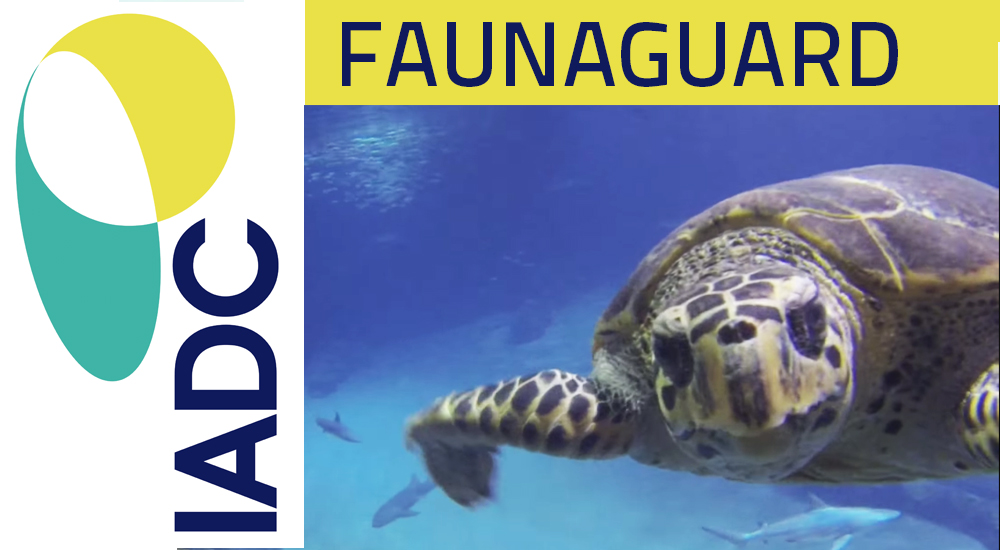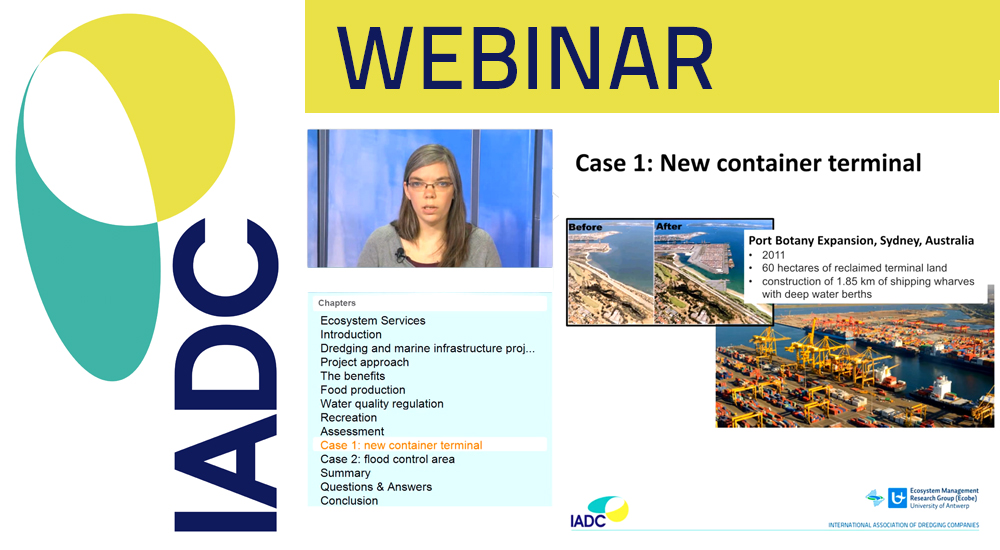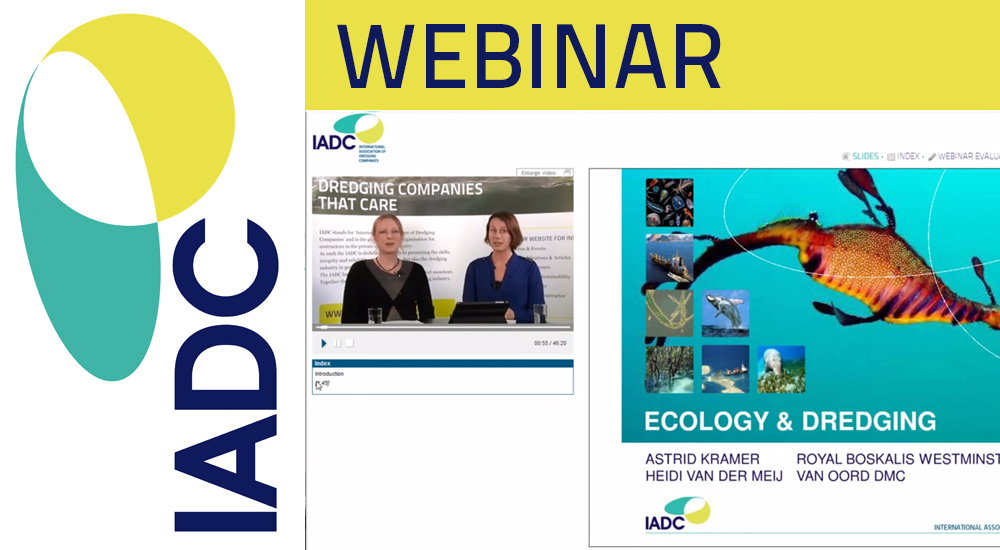The environment and its protection are always priorities during dredging projects, but dredging can also be a pro-active tool to improve the environment.
Dredging is not a “one size fits all” activity. Each project must be carefully weighed and examined in the context of the environment in which it is taking place. Although dredging operations can cause disruptions, the community and project owner must determine:
- Are these impacts long-term or temporary?
- Do the benefits, economic and social, of the final project outweigh certain environmental impacts?
- Can impacts can be mitigated by sound dredging practices?
Environmental impacts
Environmental impacts of a dredging project almost always arouse interest, discussion and often controversy amongst stakeholders, contractors and project owners. The major dredging contractors make significant investments in research to work responsibly in environmentally sensitive marine environments. Environmental engineers at the companies continue to evaluate sediments as well as the impacts of turbidity and sound on marine flora and fauna. Monitoring before, during and after a project are often pre-requisites.
Building with Nature
Additionally, concepts such as Building with Nature provide knowledge on how to improve the environment that can be applied worldwide. The preservation of ecosystems and reuse of clean sediments are an integral part of the design of a dredging project.
Remediation dredging
Remediation dredging is work in which contaminated industrial sites are cleaned and often transformed into healthy living and working locations. Restoring these so-called ‘brownfields’ into usable urban properties is another way in which dredging contributes to the improvement of the environment.
Balancing environment & economics
Finding a balance between economic and environmental values is crucial to the acceptance and therefore success of a project. Ecosystems Services is a recent effort to evaluate the cost/ benefits of a project.
Ecosystem services
Ecosystem services is a method which weighs all known benefits of a project against all known impacts that may come from implementing the project. The services of an ecosystem have been assigned to four general categories. An ecosystem can:
a. Provide for the production of food and water;
b. Regulate, that is, control climate changes and disease;
c. Support nutrient cycles and crop pollination; and
d. Contribute to culture, for instance, giving spiritual and recreational benefits.
These services have a monetary value and are balanced against the economic value that a project may contribute to the general welfare of a community or country.
TAGS
Subjects
Environment
-
 Building with Nature
Building with Nature
-
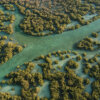 Climate Change
Climate Change
-
 CO2 & Other Emissions / Greenhouse Gases
CO2 & Other Emissions / Greenhouse Gases
-
 Coastal Protection
Coastal Protection
-
 Confined Disposal Facilities
Confined Disposal Facilities
-
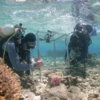 Coral Reefs
Coral Reefs
-
 Deltas
Deltas
-
 Ecosystem Services
Ecosystem Services
-
 Environmental Impact Assessment
Environmental Impact Assessment
-
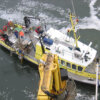 Environmental Monitoring
Environmental Monitoring
-
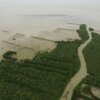 Environmental Monitoring and Management Plans
Environmental Monitoring and Management Plans
-
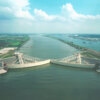 Flood Defence
Flood Defence
-
 Management Practices for the Environment
Management Practices for the Environment
-
 Mangroves
Mangroves
-
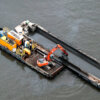 Remediation dredging (Contaminated sediments)
Remediation dredging (Contaminated sediments)
-
 Sustainability
Sustainability
-
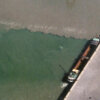 Turbidity
Turbidity
-
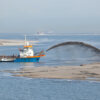 Underwater Sound
Underwater Sound
-
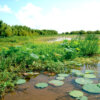 Wetlands
Wetlands
related
Articles
Waste heat recovery on dredging vessels

Limiting global warming requires the maritime sector to transition to a more efficient and sustainable operation. Reducing greenhouse gas (GHG) emissions, such as carbon dioxide and methane is vital to limit the global temperature rise (IPCC, 2021). Several legislative initiatives are in effect or are being discussed, including the IMO GHG strategy and the FuelEU Maritime initiative. This article discusses the potential of waste heat recovery (WHR) technologies to reduce the fuel consumption of dredging vessels. Available WHR technologies are compared based on working principle and operational performance for different types and ratings of internal combustion engines.
Evaluation of a nature-based agitation dredging solution
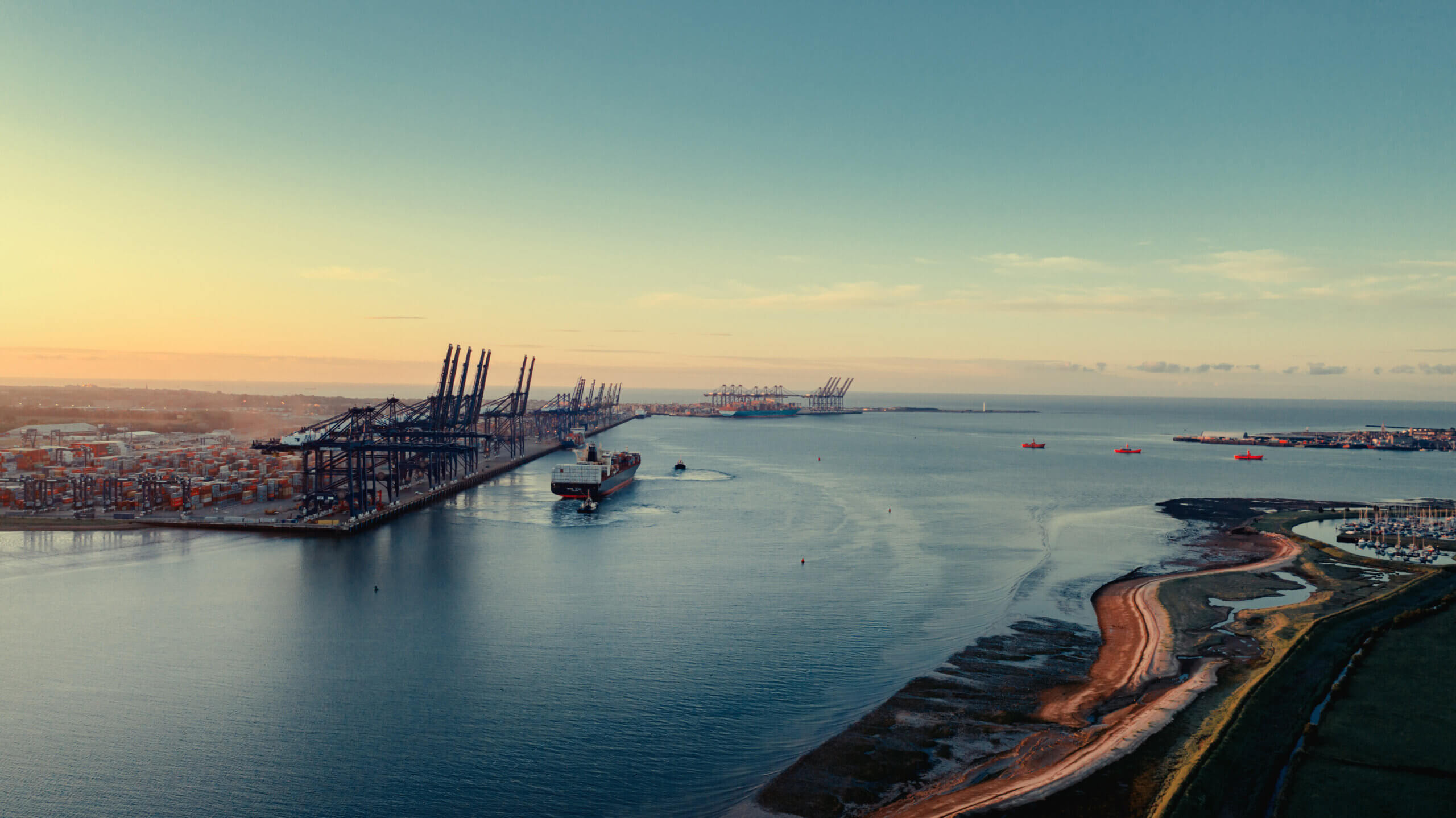
The challenge of maintaining harbours and ports while conserving and sustaining coastal habitats, with all the rich resources they provide, requires that port and harbours do more to develop approaches to maintenance dredging that provide benefit to these neighbouring habitats. In this article, we describe an example from Harwich Harbour in the UK where Harwich Haven Authority (the Conservancy Authority) is looking to move to a more nature-based maintenance dredging methodology, using agitation dredging. Using the results of monitoring and sophisticated numerical modelling, we evaluate the likely benefit to the Stour/Orwell intertidal areas arising from the use of the agitation dredging.
Simulating for sustainability: alternative operating strategies for energy efficiency
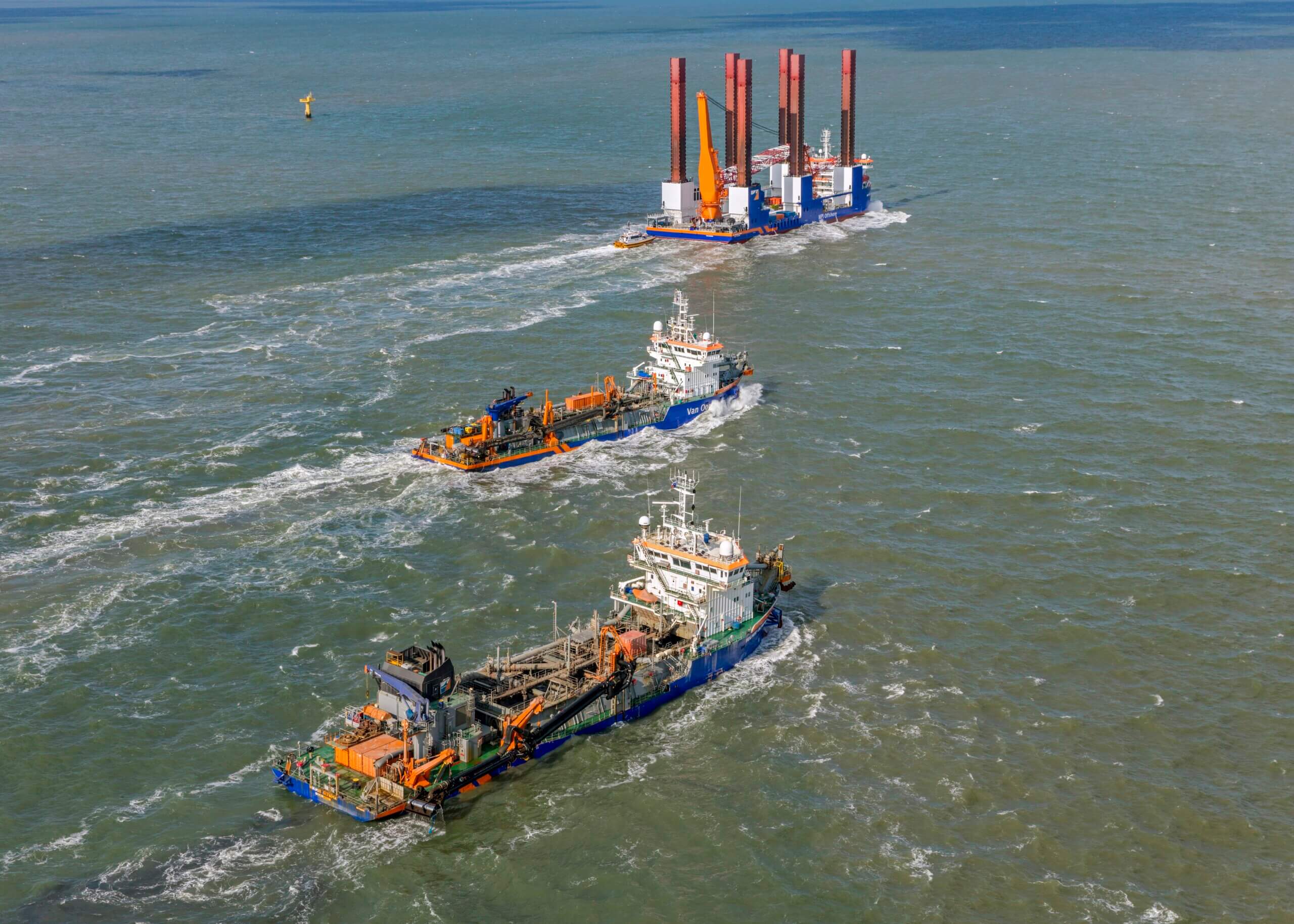
In the 2015 Paris agreement, countries committed to implementing measures to reduce greenhouse gas emissions to limit global warming. For the maritime industry specifically, the International Maritime Organization (IMO) has proposed measures for energy efficiency of vessels and candidate measures regarding fuel choice and speed optimisation. This article aims to contribute to the latter by showing how logistical simulations can be used to optimise fleet operations. We will illustrate this in the form of a conceptual case using one cutter and a range of barge fleets. Running simulations with all possible fleets, we will demonstrate the value of extra energy-based alternatives to challenge the fastest, cheapest and most flexible alternatives.
The importance of flocculation in dredge plume modelling
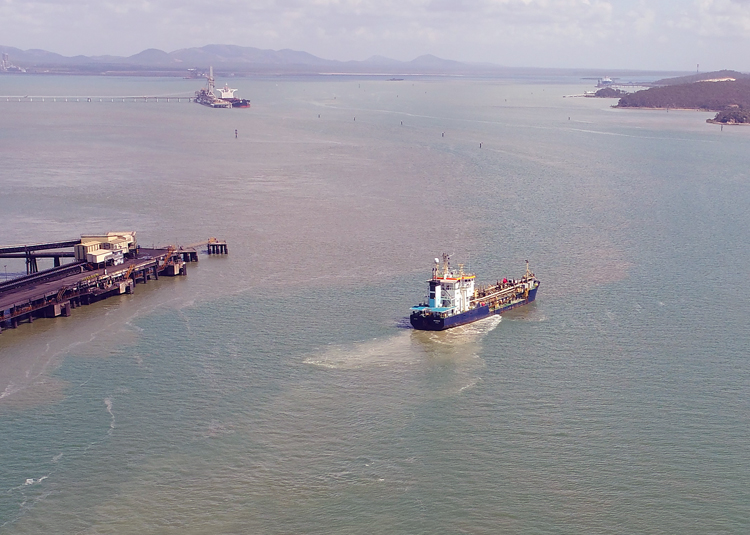
Numerical models are often used to predict the magnitude and behaviour of dredge plumes to help assess and manage any environmental risks. To provide a realistic prediction of plumes resulting from dredging, numerical models require information on the rate at which sediment is suspended by the dredging, along with the characteristics of the suspended sediment. Previous investigations have shown that in the marine environment, fine-grained sediment suspended by natural processes and dredge-related activities are typically present as aggregated particles known as flocs. This article considers the importance of including the process of flocculation in dredge plume models.
Regulation and management of marine aggregate dredging in England
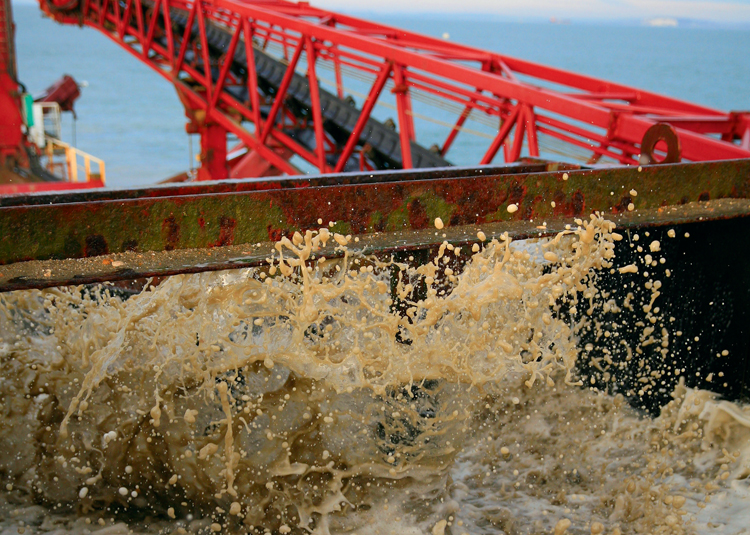
Marine dredged sand and gravel make an important contribution to regional supplies of building materials used in England. Marine aggregate dredging however, is known to result in effects to the receiving environment which, if not properly controlled, could cause adverse impacts to a wide range of receptors. As the marine area around England gets busier, competition for space comes with regulatory challenges and an integrated marine management approach that uses a robust planning system is required. This article discusses the regulation of aggregate dredging in England and provides an overview of the sector’s importance in providing primary aggregate.
Deploying private capital to accelerate the green transition
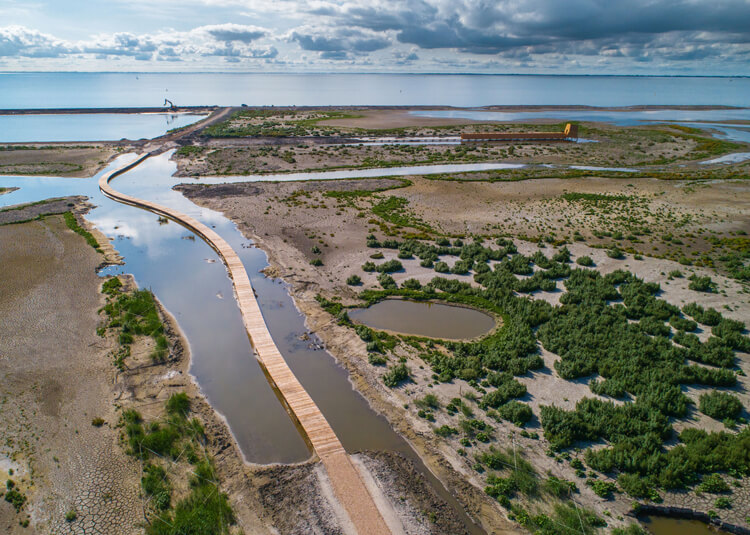
Green solutions in ports, waterways and coastal projects have increasingly become available thanks to many years of research and pioneering efforts in practice. These sustainable and/or nature-based solutions have shown to be good alternatives for classic solutions, but application is far from mainstream yet. One of the major hurdles is the lack of access of private capital to finance these kinds of solutions despite the strong interest of capital markets in green infrastructure opportunities. Identifying the hurdles and paving a way forward to overcome these hurdles could therefore help to increase the uptake of those green solutions.
Climate Risk Overview tool: mapping naturebased flood protection opportunities
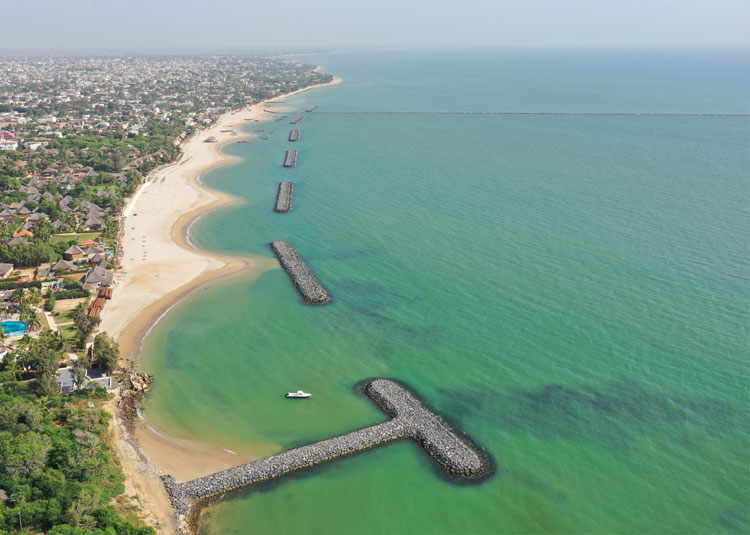
The planet is facing enormous challenges caused by human activity, increasing the vulnerability of communities and ecosystems to the forces of nature. This is worsened by the effects of climate change, which is threatening the world’s coastal defences. Van Oord has responded to these challenges by developing the Climate Adaptation Action Plan. The plan is designed to encourage meaningful dialogue between stakeholders in order to provide ready-to-scale marine solutions that help increase the resilience of the communities and ecosystems of coastal areas.
The impact and costs of Building with Nature projects

The use of nature and natural processes is an innovative way to increase water safety and create added value through nature development and recreation. This exploratory study provides an initial inventory of the impact and costs of existing Building with Nature projects in the Netherlands. It also includes an analysis of the decision-making process in choosing this type of project and identifies success factors. Building with Nature projects deliver added value but often also involve additional costs compared to traditional reinforcements. These costs give an indication of what we as a society are prepared to pay for the development of nature and recreation as part of hydraulic engineering projects.
The valuation of externalities in maritime infrastructure projects
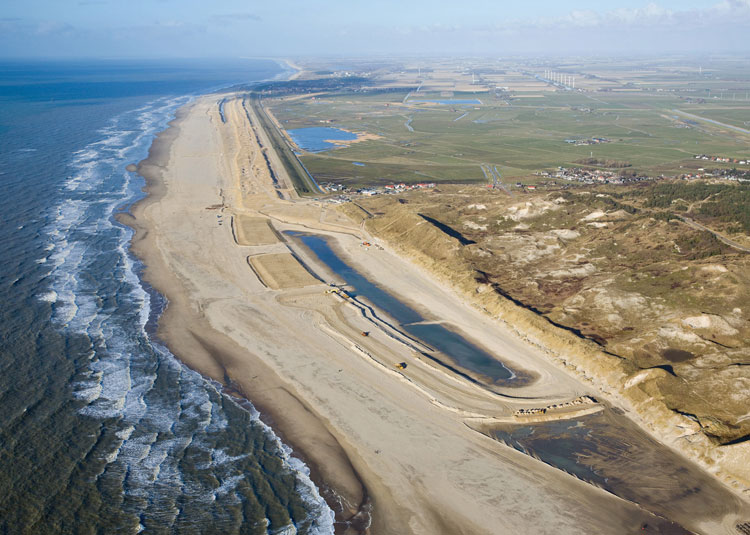
Climate change and increasing environmental damage are demonstrating the urgency of transformation to a sustainable global economic model. The implementation of the sustainable development concept tends to narrow to integrating environmental, social, and economic concerns in the decision making. In economics, the definition of such concerns is an externality that represents the divergence between social and private costs. This study investigates the available sustainable asset valuation methods that can include the externalities materialised in maritime infrastructure projects and compares them based on economic, social and environmental criteria.
The responsible project: A view on social licence
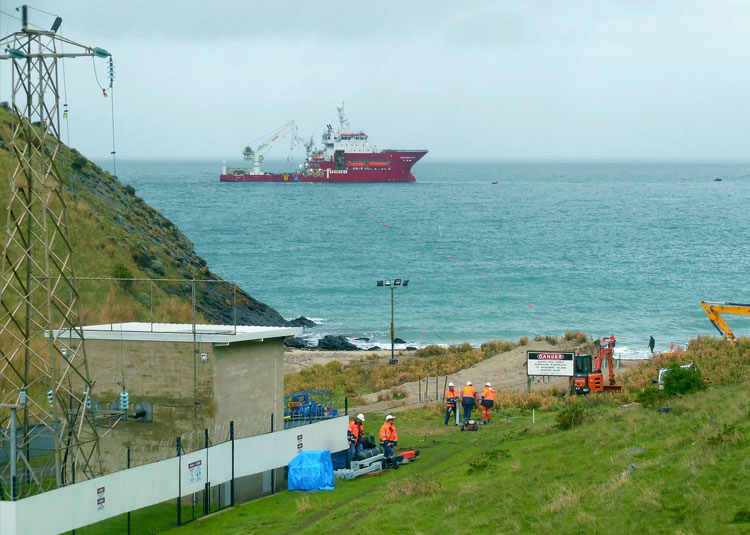
In today’s world, expectations for sustainable practices are fast becoming the norm. Countries, the public and communities are requesting transparency, the application of higher environmental standards and involvement in decision-making processes when new developments in a marine environment are proposed. Marine infrastructure projects not only require environmental permits and works licences to be in place, they also need a Social Licence to Operate (SLO). This article describes the social licence in this fast-changing context of information and technology, and explores tools that can be used to develop a ‘responsible project’ and provide a successful and sustainable outcome for society and the environment.
Applying the ecosystem services concept in marine projects
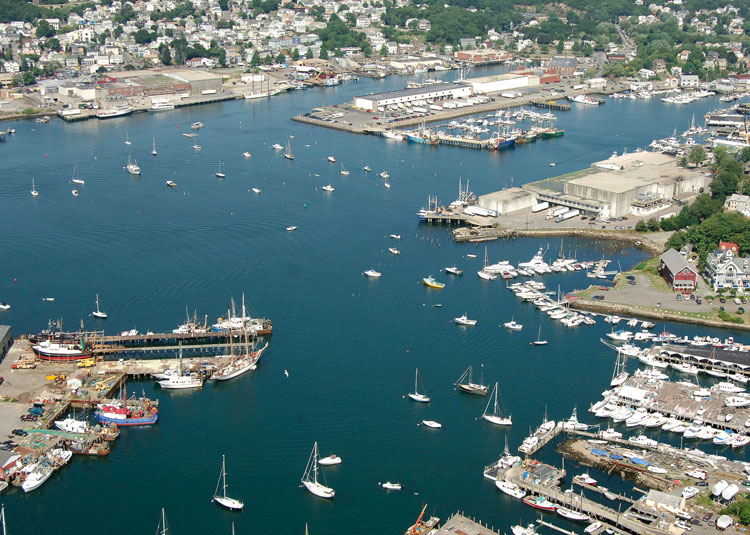
A full consideration of ecosystem services (ES) impacts, interactions and improvements can result in more sustainable and adaptive solutions for dredging and marine construction projects. Furthermore, the benefits can be translated in monetary terms, providing returns on investment and highlighting the links between ecology and economy. For some however, the ES concept is too theoretical. This article seeks to show how the ES concept can actively be applied at any point during a project and the benefits of doing so. Its purpose is to provide a framework for integrated and interdisciplinary thinking throughout the different steps of the project cycle.
Study of greenhouse gas emissions during ripening of dredged marine sediment
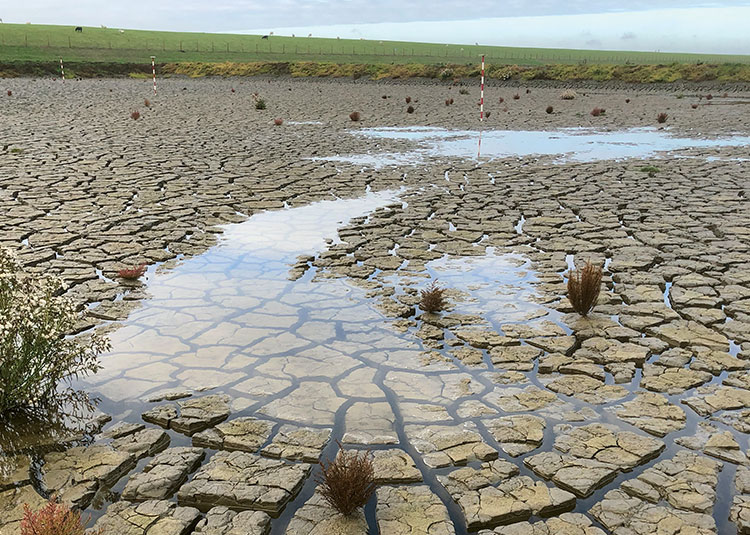
As increasing greenhouse gas (GHG) emissions contribute to global warming, it is becoming more important to consider the carbon footprint of hydraulic engineering projects. This carbon footprint is more complex than previously thought however, as it can also include the carbon dynamics of the sediments from which projects are built. The purpose of this study was to provide a first approximation from sediment-related GHG emissions of dredged sediments. Using the case study of the clay ripening pilot project (‘Kleirijperij’) in Groningen, the Netherlands, one phase of sediment processing was examined: the ripening of dredged sediments for use as a clay material in dyke construction.
Balancing project progress and limited system knowledge in Amatique Bay
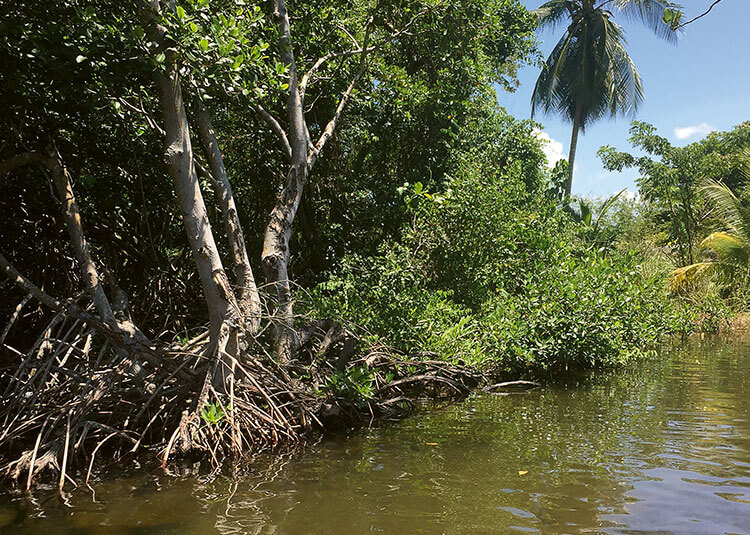
The development of a new marine project demands a system approach in which all aspects, including technical, economic, environmental and social, are considered and integrated equally and at an early stage. While insufficient information may be available to make informed decisions, choices need to be made to progress a project, assess impacts and risks, and engage stakeholders. This article explores the case of a new port terminal in Amatique Bay, Guatemala. A method was developed to assess, at an early stage, the potential negative impacts on seagrass habitats from the disposal of dredged material at different locations, while having limited real-time and location-specific information at hand.
Creating mangrove habitat for shoreline protection
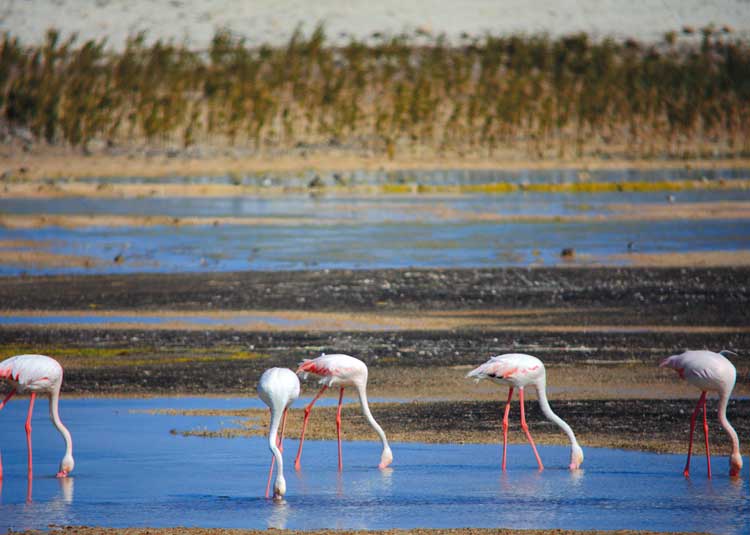
Over the past decades, there has been a growing interest in exploring innovative ways to minimise the environmental footprint of coastal developments and in nature-based approaches for shoreline protection. At Mubarraz Island near Abu Dhabi (UAE), an international oil company beneficially reused ~12 million m³ of dredged material to protect pipelines, construct a causeway and create mangrove habitat to manage coastal erosion. This ‘Working with Nature’ approach has provided a cost-effective nature-based solution for shoreline protection, with added benefits for biodiversity conservation.
Bio-Engineering Sediment Management And Removal of Turbidity Technologies: BESMART Technologies
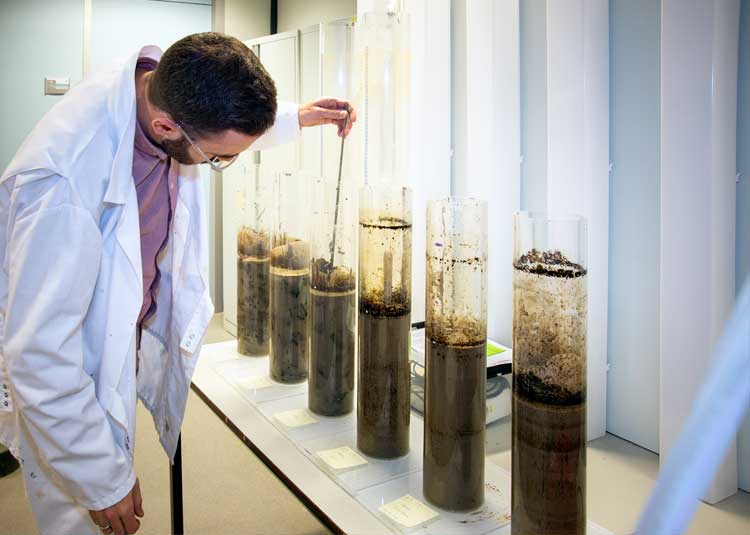
At Deltares in the Netherlands, a research team is developing a portfolio of technologies dedicated to the management of the finest and most challenging fraction of soft sediments. These technologies may unambiguously be called nature based because they make use of natural processes to enhance dewatering and strengthening, induce flocculation and the settling of fines, and protect the muddy bed from erosion.
The Smartsediment tool: a QGIS plug-in for evaluating ecosystems services
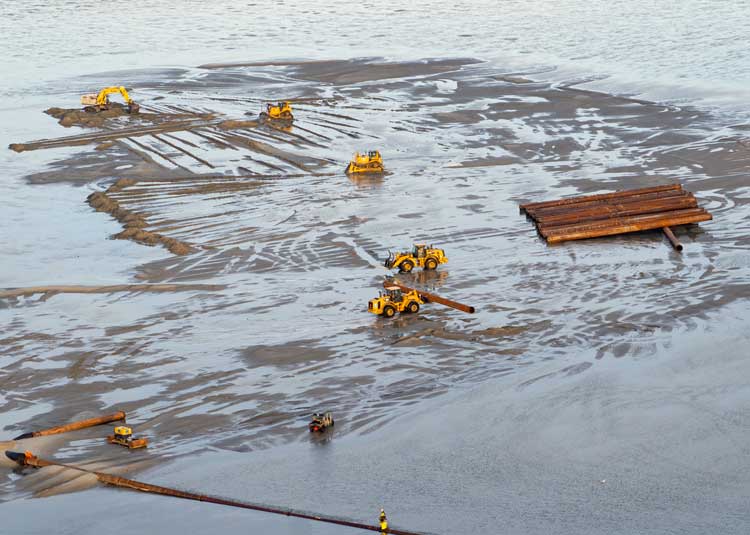
Managing sediments, especially from dredging, is important for the management of estuaries and coastal areas. When implemented in the right way, a sediment management strategy can be qualified as a nature-based solution as it uses the physical processes of erosion and sedimentation to create added value. There is a need for an evaluation of sediment strategies and the habitats that are created for a wider range of objectives than only biodiversity and nature conservation. The concept of ecosystem services provides this broader framework.
Land reclamation: The potential for subsurface freshwater storage
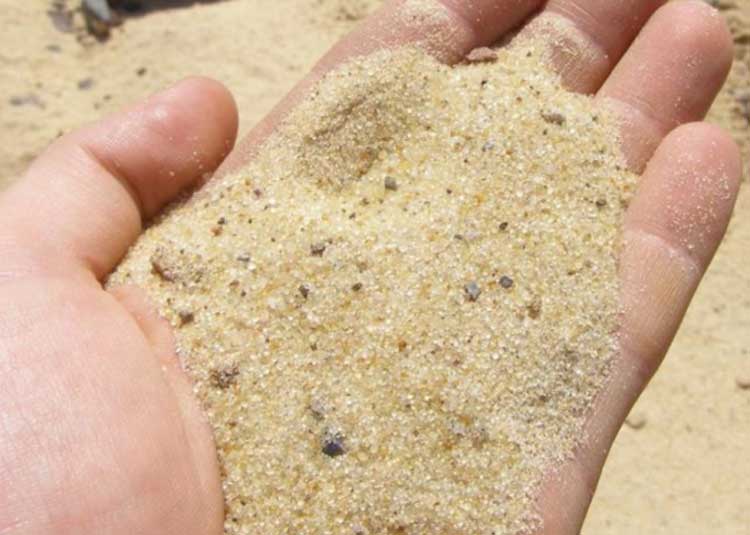
At present too little use is made of the opportunities that the design and construction of land reclamation offer for the underground storage and recovery of fresh water. The managed aquifer recharge systems in the coastal dunes of the Netherlands are a good example of successful subsurface water storage. And it is to be expected that the sandy deposits of land reclamations could serve a similar purpose. This in turn will contribute to a sustainable development of land reclamations.
Assessing and evaluating environmental turbidity limits for dredging
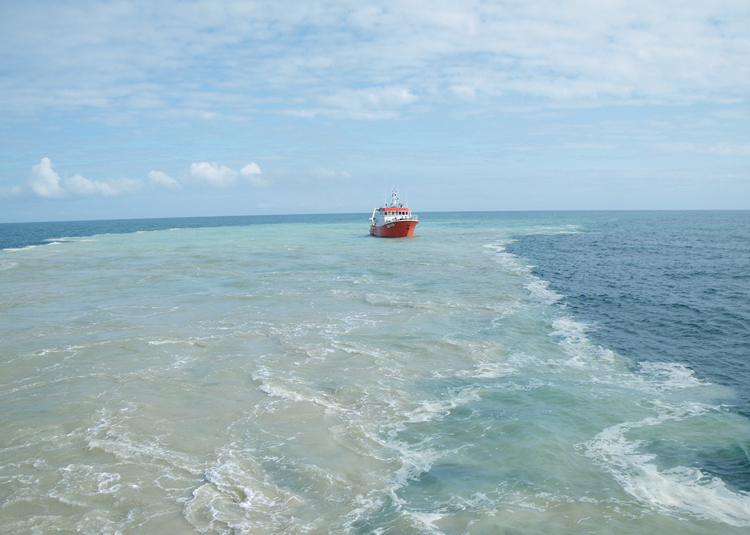
Dredging is essential for the maintenance and development of ports, harbours and waterways to allow for safe navigation, remediation and flood management. The process, which relocates large volumes of sediment, can be accompanied by the release of suspended sediments into the water column referred to as sediment plumes.
ReefGuard: A Scientific Approach to Active Reef Rehabilitation
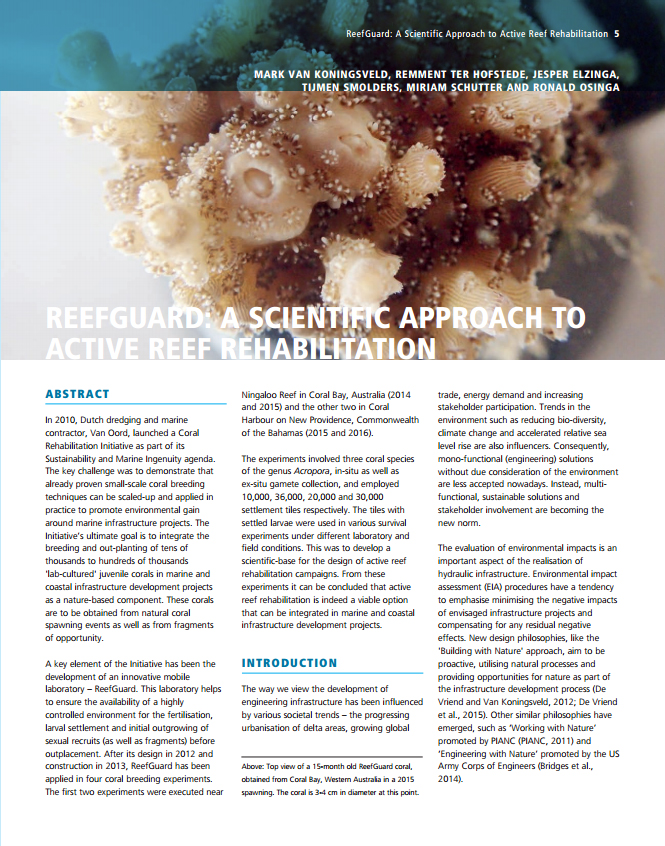
ReefGuard, a mobile coral breeding facility provides a highly controlled environment to aid in integrating the breeding and outplanting of corals. This article gives a detailed look into how proven small-scale coral breeding techniques can be scaled-up and applied in practice to promote environmental gain around marine infrastructure projects.
Building with Nature: Sustainable Protection of Mangrove Coasts
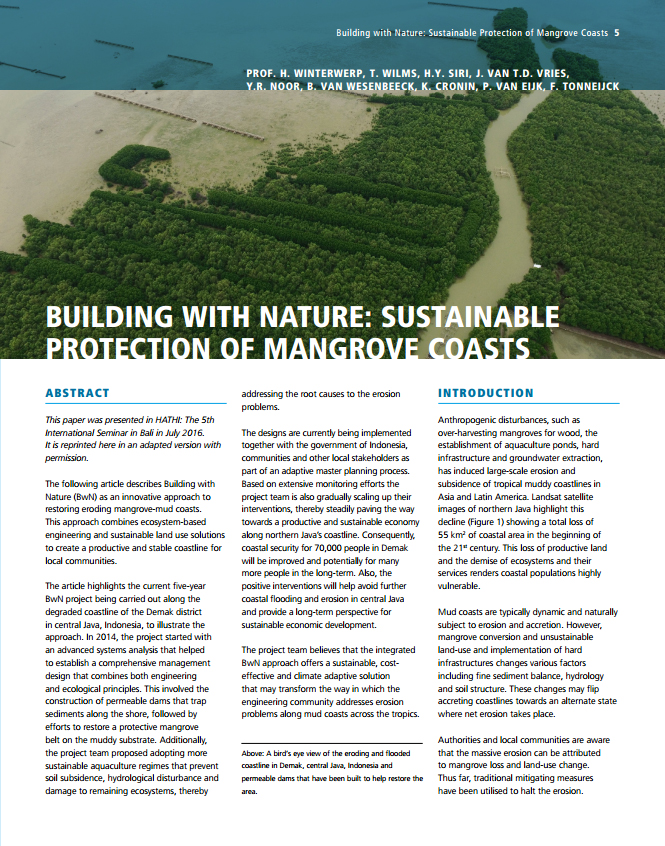
Building with Nature is an innovative approach that combines natural processes with innovative engineering methods to realise sustainable projects. Permeable dams are being utilised as part of a Building with Nature solution to help restore the eroding mangrove-mud coast of the Demak district in central Java, Indonesia.
Dredging Sound Levels, Numerical Modelling and Environmental Impact Assessment (EIA)
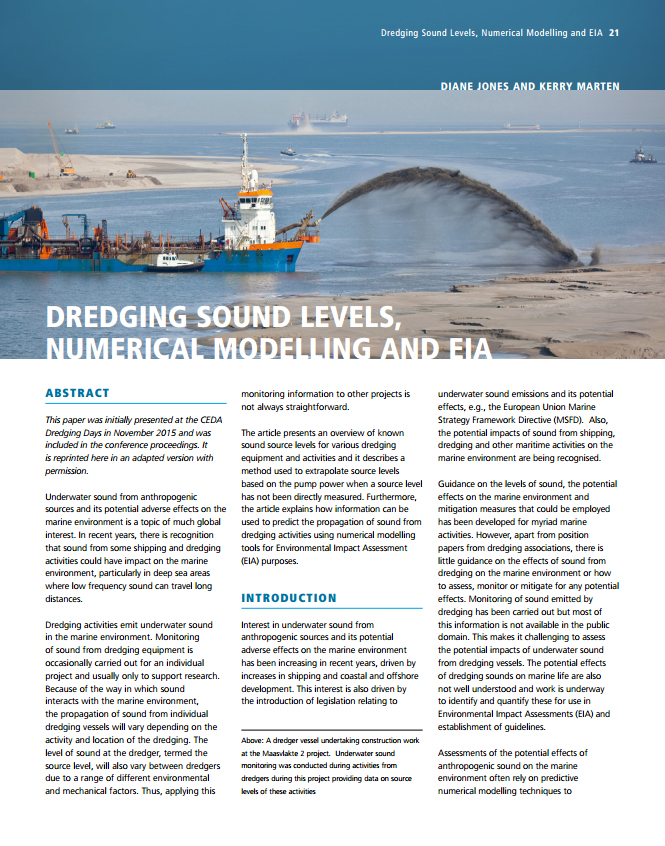
Underwater sound from anthropogenic sources and its potential adverse effects on the marine environment is a topic of much global interest. This article gives an overview of known sound source levels for various dredging equipment and activities and describes a method used to extrapolate source levels.
Pressing the Co2 Buttons: Towards Ecosystem-Based Co2 Footprinting for Maritime Engineering Projects
Biogeomorphological Interactions on a Nourished Tidal Flat: Lessons Learnt from Building With Nature
Dredging in New Caledonia at a Unesco-IUCN World Heritage Site with Care for Nature
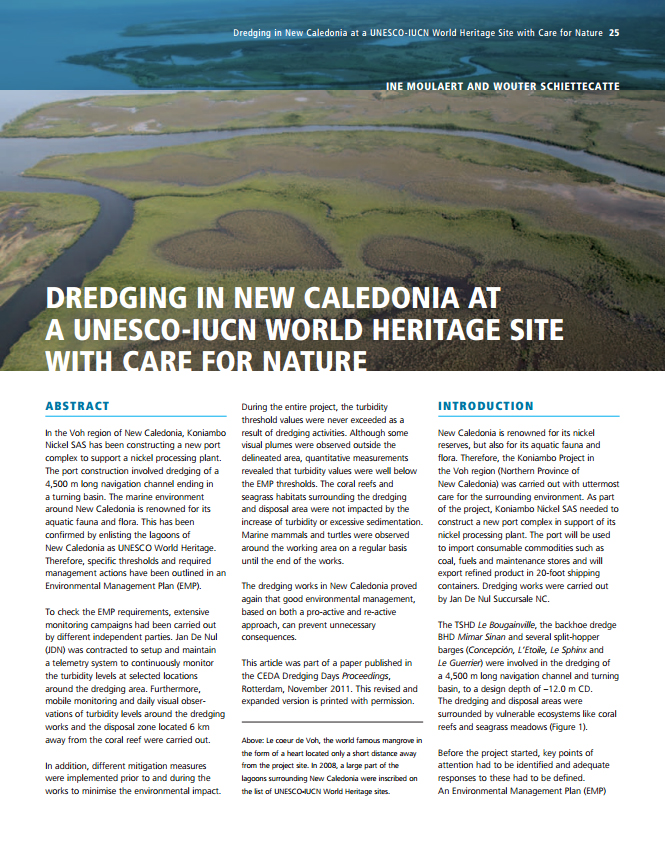
Dredging for a new port complex in a remarkable, protected marine environment required adherence to very specific thresholds and an intensive Environmental Management Plan (EMP) that included mobile monitoring as well as daily visual observations of turbidity levels around the dredging works and the disposal zone.
Facts About
Publications
Environmental Aspects of Dredging
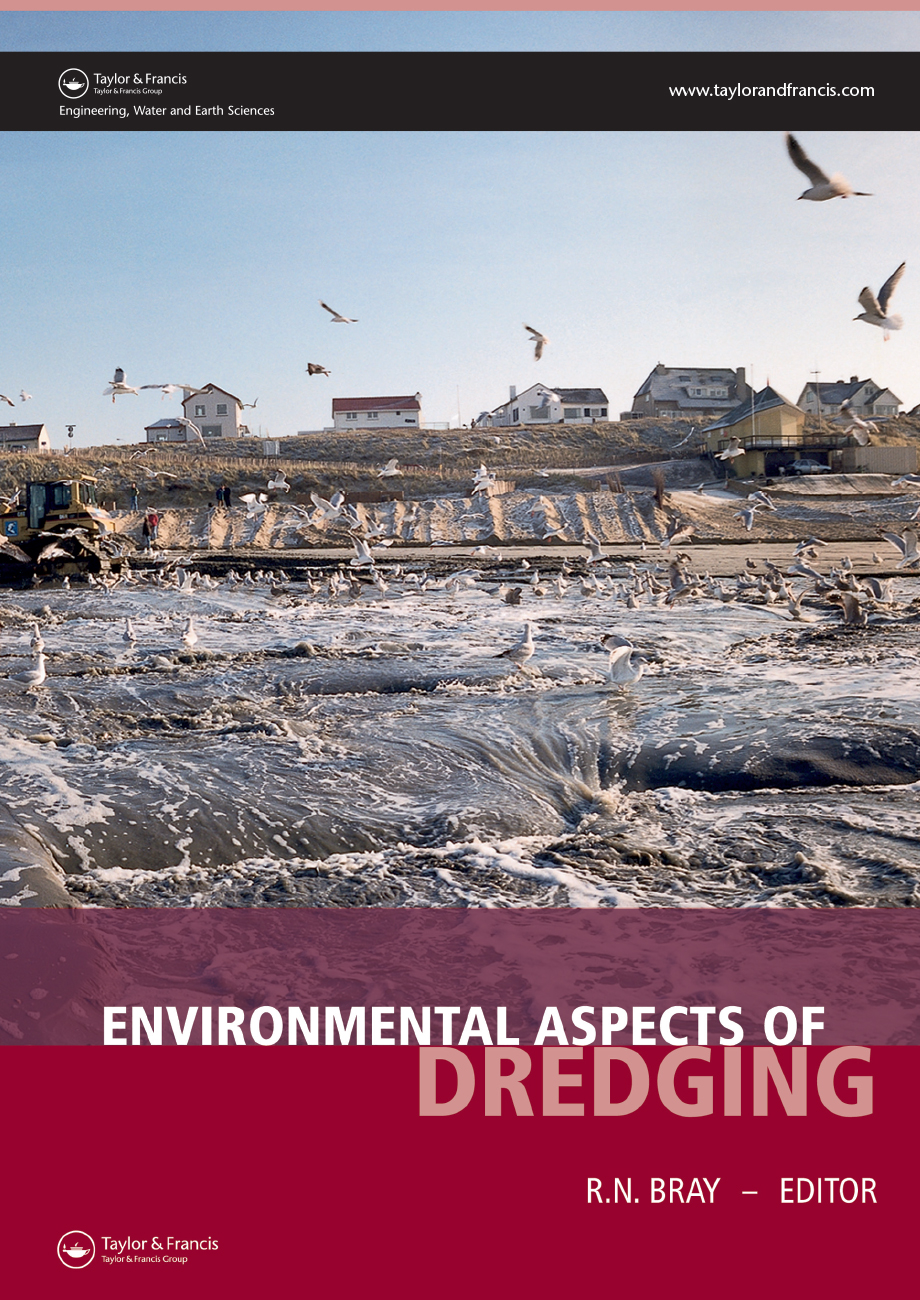
This book is out of print and has been replaced with an updated book. To read more about Dredging for Sustainable Infrastructure, click here.
Videos
Presentation: ‘There is ”more” in maritime infrastructure‘ by Marc Huygens (DEME) − Environmental Manager
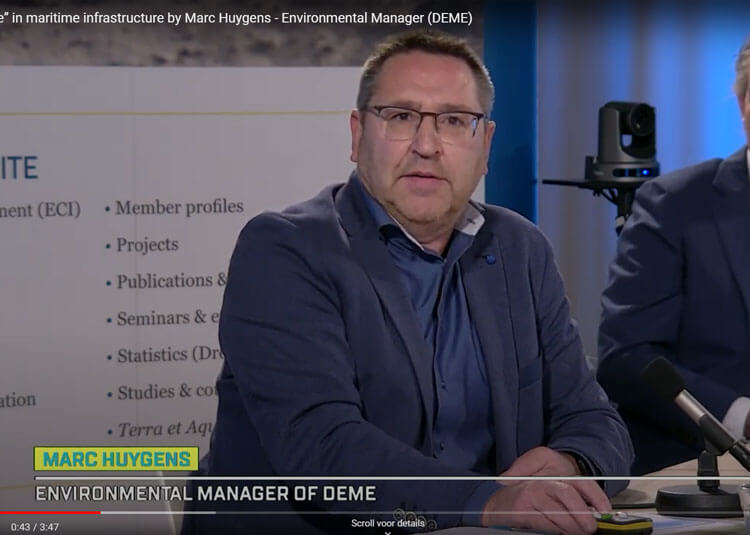
There are opportunities to develop and implement new solutions for maritime infrastructure challenges. In addition to technical-economical values there is a big commitment to create both environmental and social values. To take the industry to the next level it is necessary to attract students and young professionals to the industry to ensure all externalities are taken into consideration from the onset of a project. The “Social Benefits Wheel” is a tool that can help track the degree to which a project or programme is attaining its social development targets and goals.


